Japan is home to two of the world’s leading air carriers: ANA and Japan Airlines. While they both have an excellent reputation, what’s most impressive are the First Class products that are amongst the world’s most aspirational aviation experiences.
Onboard these First Class flights, you’ll experience attentive and personalized service, luxurious suites, indulgent multi-course meals, and expensive Champagne and whisky.
In this edition of Head-to-Head, it’s a battle of the airline titans as we pit ANA First Class against Japan Airlines First Class.
In This Post
- Routes
- Availability & Booking
- Ground Experience
- Cabin
- Seat
- Amenities
- Meal Service
- Drinks
- Entertainment
- Snack Service
- Conclusion
Routes
The Suite, ANA’s flagship First Class product, debuted in the summer of 2019. While the airline has 15 Boeing 777-300ERs in its fleet, just nine of them feature the new product.
For the purposes of this comparison, we’ll focus on The Suite; however, note that ANA also has two other First Class products: the older “First Square” and a third variant on the Airbus A380.
Since there are just a few 777s with The Suite, you won’t find ANA’s best First Class product on a predictable schedule. Rather, you’ll have to manually ascertain if the aircraft scheduled for your flight has The Suite or the First Square.
The first three destinations to receive the new cabins were New York, London, and Frankfurt, so you’re more likely to find The Suite on these routes. Occasionally, ANA rotates the new First Class product into other North American gateway cities, such as Chicago, Los Angeles, and San Francisco.
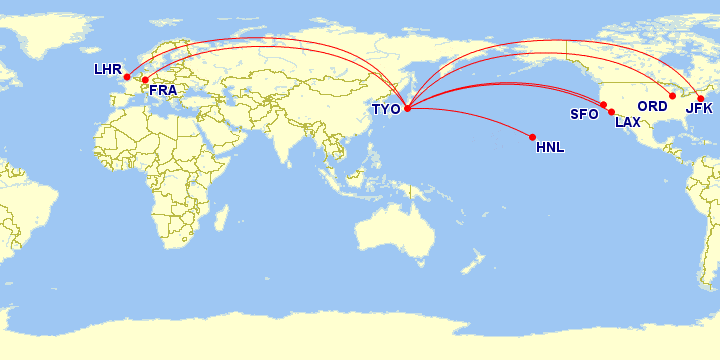
On the other hand, Japan Airlines has the same First Class product on all of its Boeing 777 aircraft, which serve Chicago, Los Angeles, New York JFK, and San Francisco, as well as routes to London and Paris.
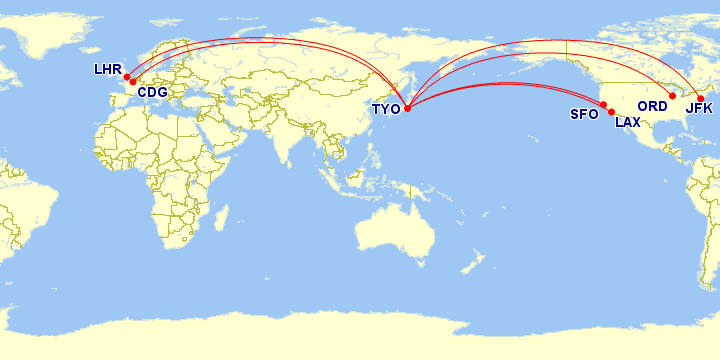
Both airlines offer First Class cabins from Tokyo Haneda and Tokyo Narita.
Verdict: With consistent routing and all of its fleet equipped with the same flagship First Class product, Japan Airlines emerges victorious in the first round.
Availability & Booking
Typically, scoring a First Class award ticket with ANA requires booking far in advance and being very flexible with your schedule. However, award availability for ANA First Class is currently extremely challenging to come by, even if you search a year ahead of time.
Plus, since it’s quite difficult to obtain award space for only one passenger, finding First Class award space for two is an even rarer occurrence.
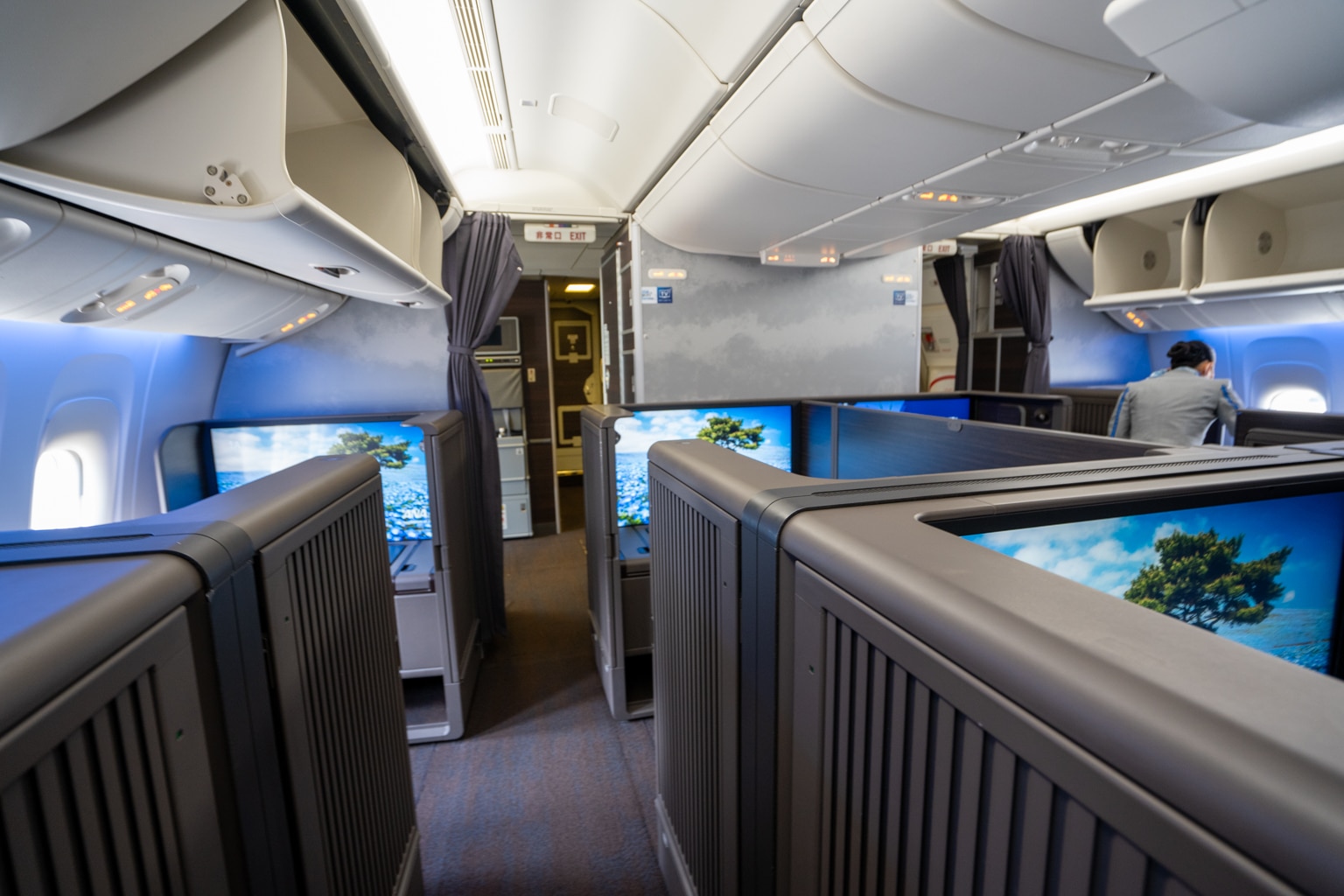
Booking JAL First Class, on the other hand, is much more dependable. Japan Airlines is one of the few carriers with more predictable, readily available award space.
If you book nine months or more in advance, and have some flexibility for your departure date and airport, you have a decent chance of finding award tickets for one or even two travellers.
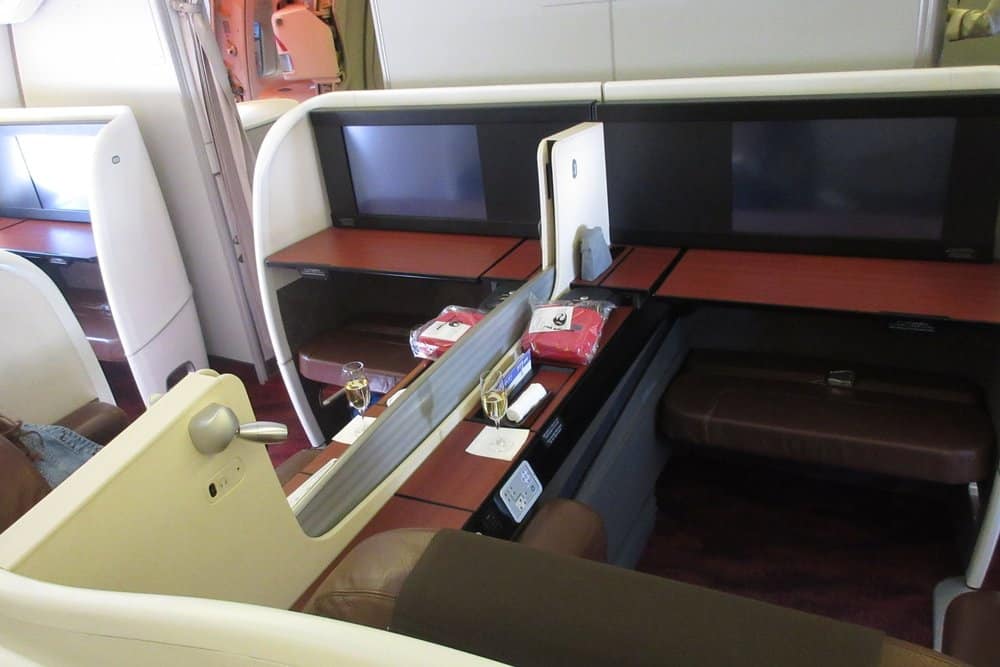
However, what truly puts JAL First Class ahead of ANA, at least when it comes to award space, is the amount of last-minute availability.
JAL consistently releases additional unsold award seats 14 days prior to departure. Therefore, reserving First Class seats for one or two people is generally within the grasp of most savvy Miles & Points enthusiasts, as long as the flights aren’t sold out to begin with.
When it comes to sweet spots, one of the best in the game is through Virgin Atlantic Flying Club’s partnership with ANA. You can book a one-way flight in ANA First Class for just 55,000 miles from the western United States and 60,000 miles from the eastern United States.
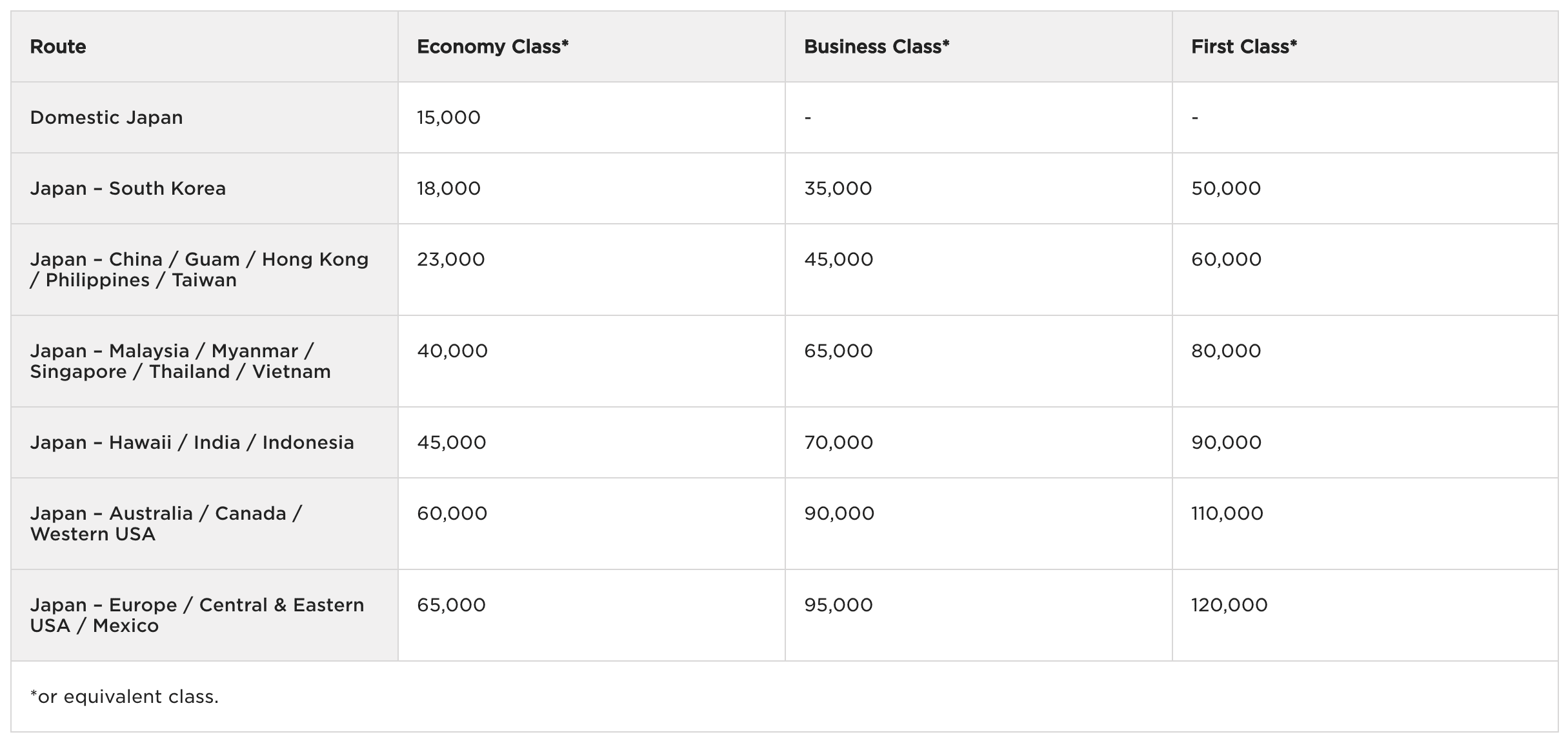
The same flight booked with Aeroplan points, for example, can cost twice that amount.
Despite these sweet spots, it can be difficult for Canadians to earn miles with Virgin Atlantic Flying Club. Canadians are limited to US credit cards, where US-issued Amex MR points can be transferred to Virgin Atlantic, or converting Marriott Bonvoy points.
JAL has a much broader set of sweet spots. Booking with Alaska Airlines Mileage Plan is the most convenient option for Canadians, and it costs just 70,000 miles to fly First Class between North America and Japan, Korea, or India.

Unfortunately, earning Alaska miles in Canada recently became more difficult, with the discontinuation of the MBNA Alaska Airlines Mastercards.
Another sweet spot is to redeem 80,000 American Airlines AAdvantage miles for a one-way JAL First Class flight from North America to Japan or Korea. AAdvantage miles can be earned through US credit cards, converting Marriott Bonvoy points, or transferring from RBC Avion at a ratio of 1:0.7.
Verdict: Despite the incredible sweet spot offered by ANA and Virgin Atlantic Flying Club, it’s rendered less useful when paired with a relative dearth of availability. Once again, Japan Airlines is the victor, with its superior award space and ample sweet spots.
Ground Experience
ANA and Japan Airlines both have excellent ground products, with ultra-modern lounge designs, ample seating, and sleek facilities.
The ANA Suite Lounge has a sleek and sophisticated atmosphere, with dark metal accents and black leather furnishings.
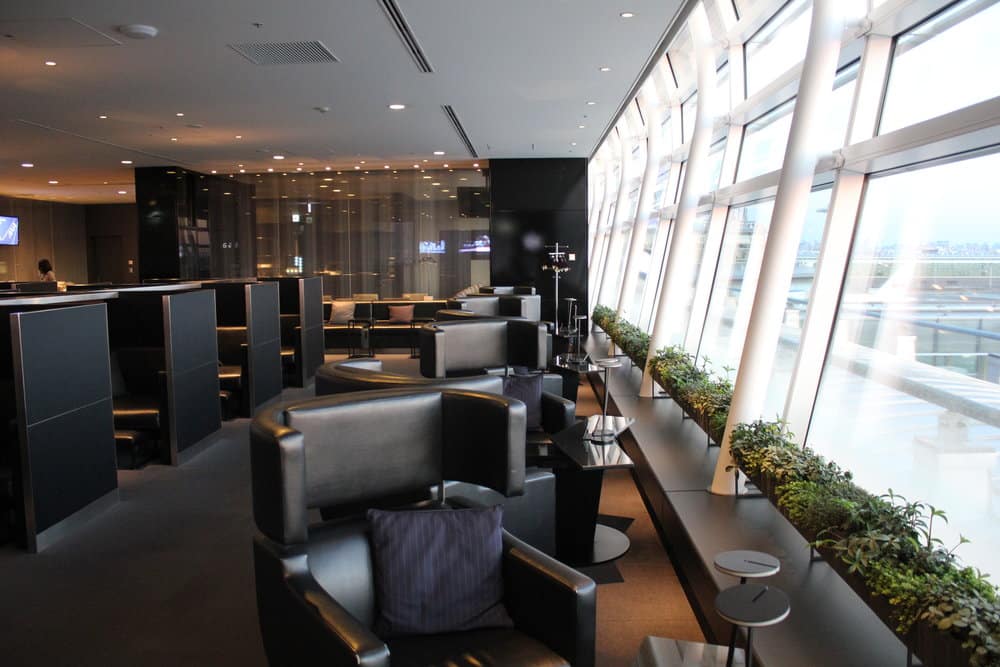
In contrast, the Japan Airlines First Class Lounge is bright and opulent, with brown furnishings alongside touches of marble and greenery.
Floor-to-ceiling windows with spectacular views of the airport tarmacs, private pods for working or relaxing, and showers are available in both lounges. However, the biggest difference comes with the food offerings at each airline’s flagship lounge.
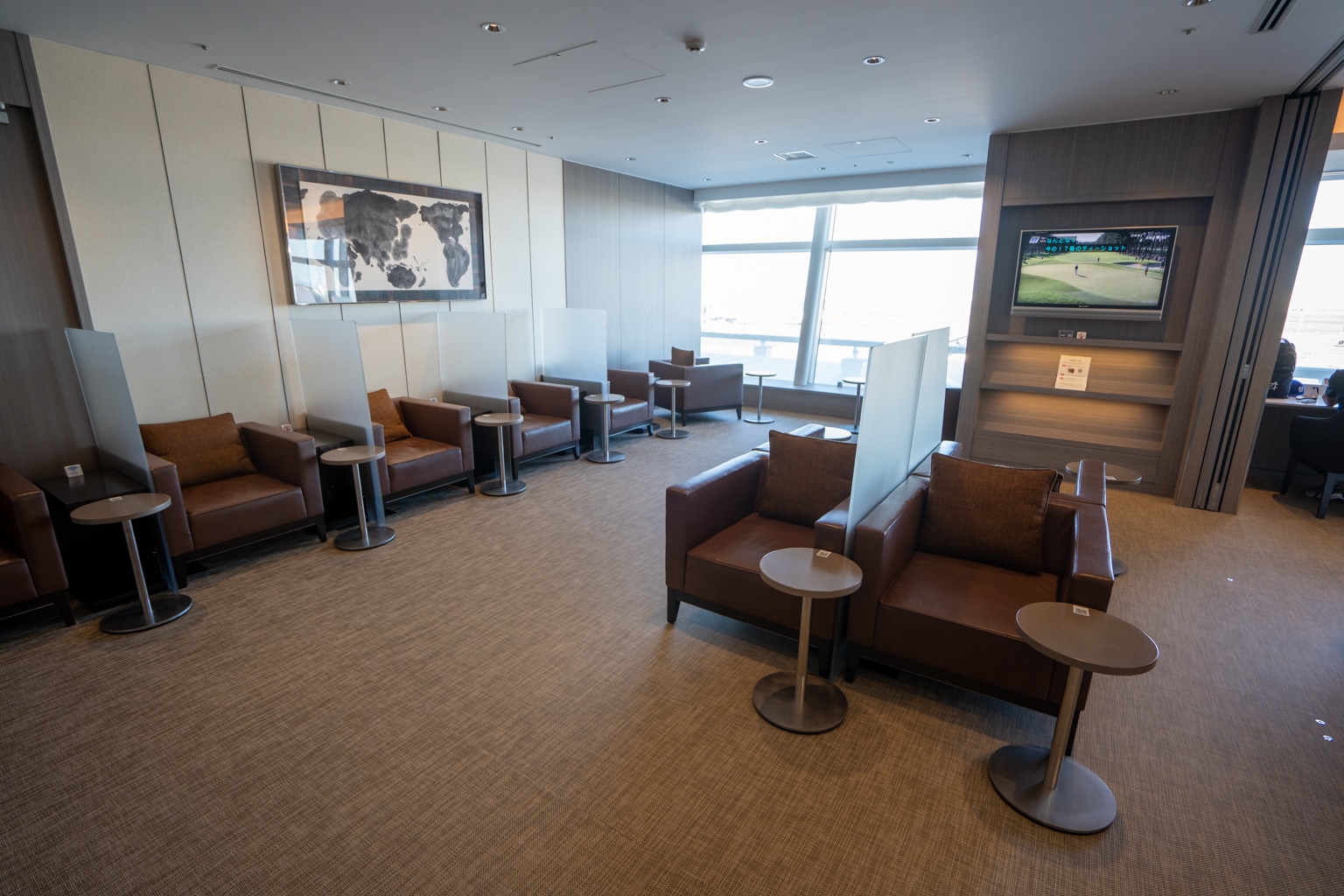
ANA has a modest food spread, with a decent mix of Japanese and Western breakfast items, as well as a buffet. Where ANA truly shines, however, is their made-to-order noodle bar, consisting of udon, soba, and ramen noodles that can’t be found in the JAL First Class Lounge.

Japan Airlines offers a very light buffet spread, as well as an à la carte menu. During my most recent visit, there was only one type of Chinese-style noodles available to order, and no Japanese-style noodles.
There is, however, a sushi chef stationed in the lounge, from whom you can order unlimited portions of sushi made right before your eyes.
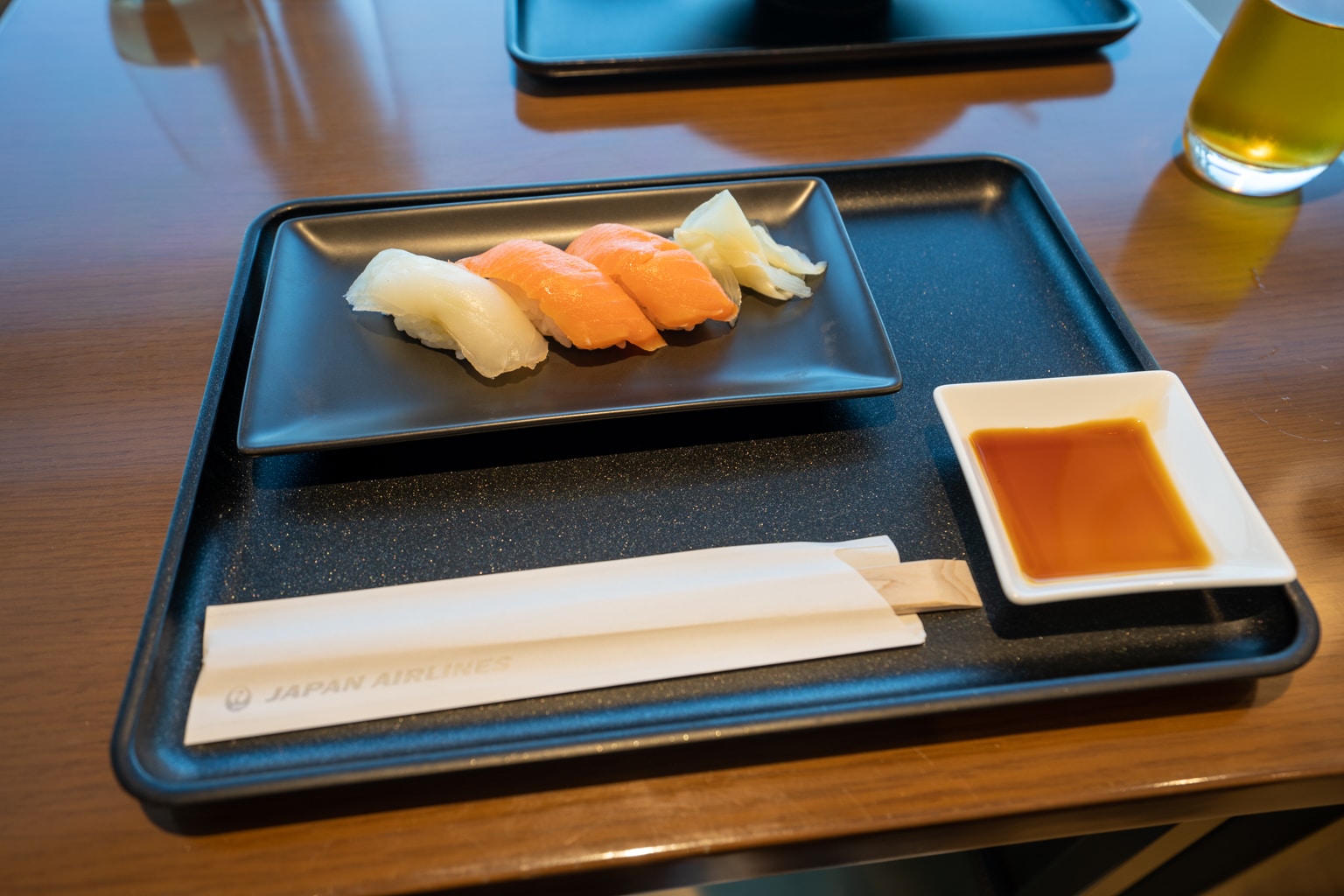
Despite having a smaller food selection than ANA, JAL’s Red Suite is perhaps the best feature out of both lounges. With a self-serve bar of premium sake and Laurent-Perrier Champagne, this one-of-a-kind aviation-themed room exudes a sense of wonder and luxury.
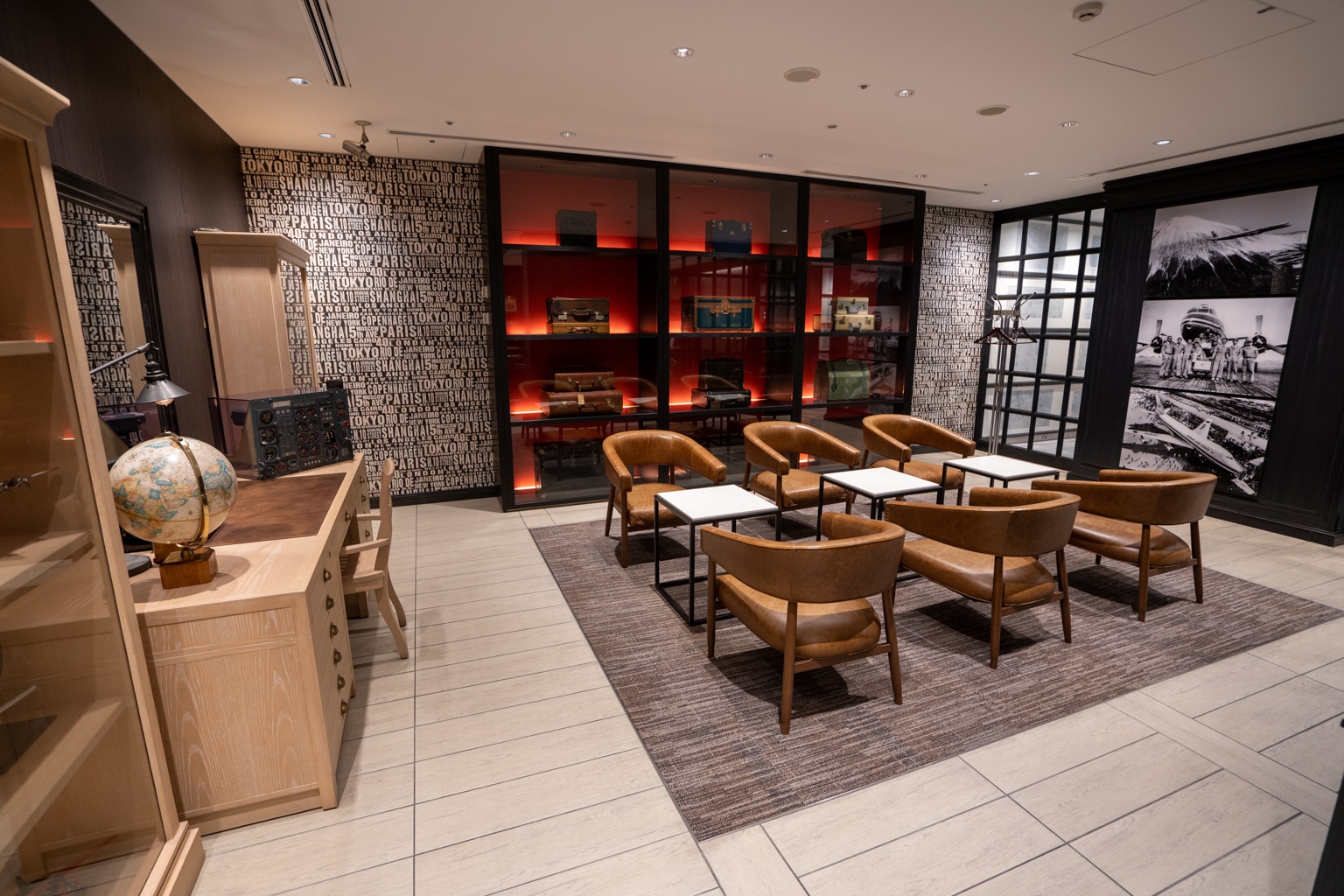
ANA and JAL’s two First Class lounges each offer something unique that the other does not. Whether you’re searching for the best quality food spread or a posh location to unwind, exactly which is superior will likely come down to personal preference.
If you’re like me and highly value a made-to-order noodle bar, you’ll probably appreciate the ANA Suite Lounge. On the other hand, if you’d rather relax in a space that’s light and airy while you sip on some expensive self-serve Champagne discreetly in the back, JAL will satisfy your needs.
Verdict: Let’s call this one a draw, due to each lounge having something unique that the other lacks.
Cabin
As one of the world’s most cutting-edge First Class, the new ANA First Class cabin carries a striking look, with electric-blue mood lighting that highlights the brand-new sleek bronze suites.

When compared to the gorgeous luxury cabin in ANA First Class, JAL’s First Class cabin certainly falls short. Given that the suites on JAL First Class are over 10 years old, they have a very conventional and classic design, with muted cream shades and patterned antique carpets.

In terms of layout, both cabins feature eight First Class suites spread across two rows in a 1-2-1 configuration, each with direct aisle access.
Verdict: Although JAL continues to offer a first-rate product, it’s starting to lag behind other innovative First Class designs, and is in need of a refresh. Thus, ANA’s The Suite, with its modern cabin, is triumphant this time.
Seat
Aesthetics
Onboard ANA First Class, the aesthetics of the seats are all-around magnificent. The Suite is exceptionally large and broad, with bronze walls and oak accents, as well as spectacular sliding doors that provide superb privacy.
Moreover, the blue accents in the furniture complement the cabin’s vibrant mood lighting and the mesmerizing ultra-high-definition 42-inch entertainment screen.
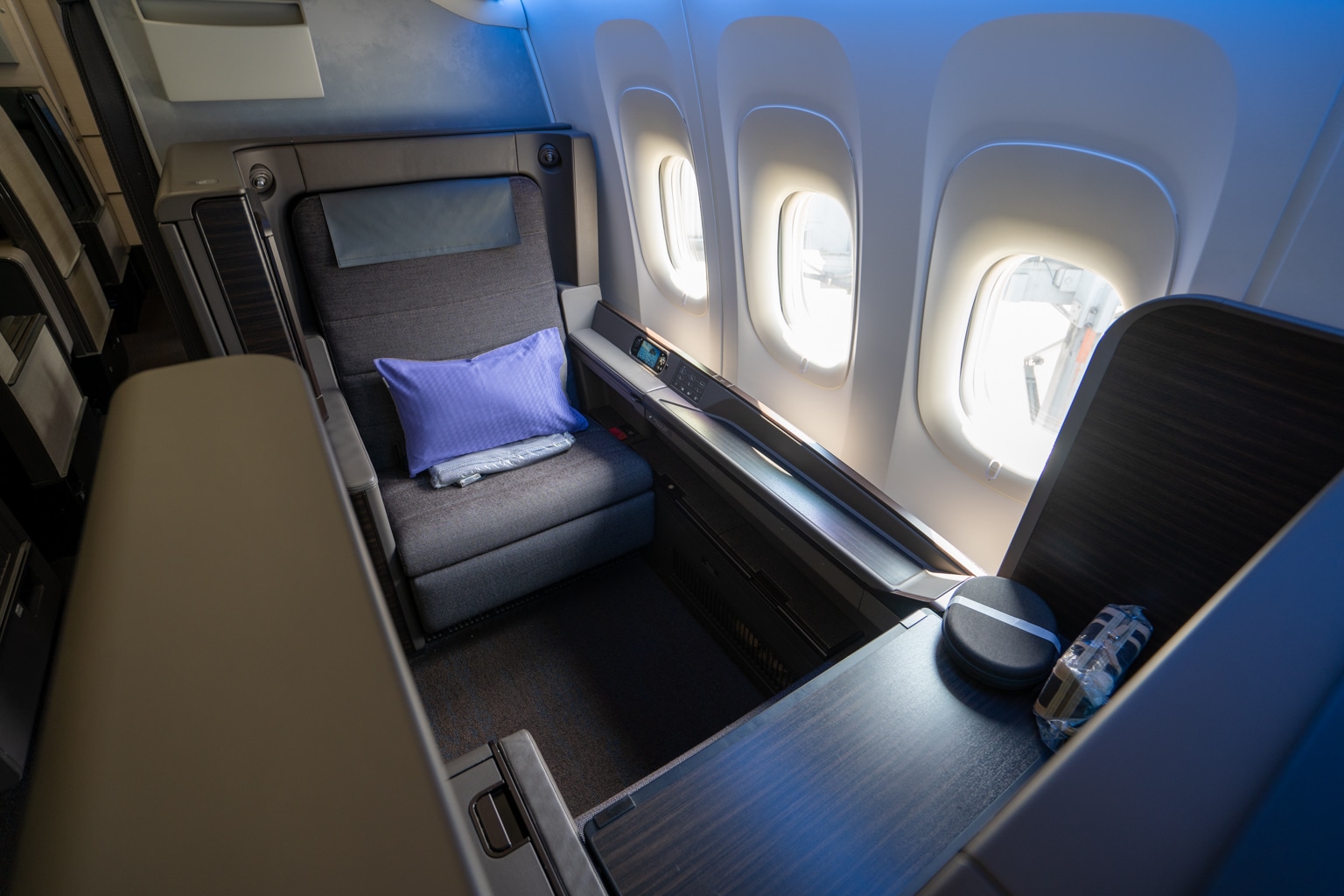

JAL First Class seats are likewise very spacious; however, they don’t afford nearly the same level of privacy as ANA’s modern First Class product. JAL’s First Class suites are comprised of brown leather chairs and wooden consoles, and have a much smaller entertainment screen than what you can find on ANA.
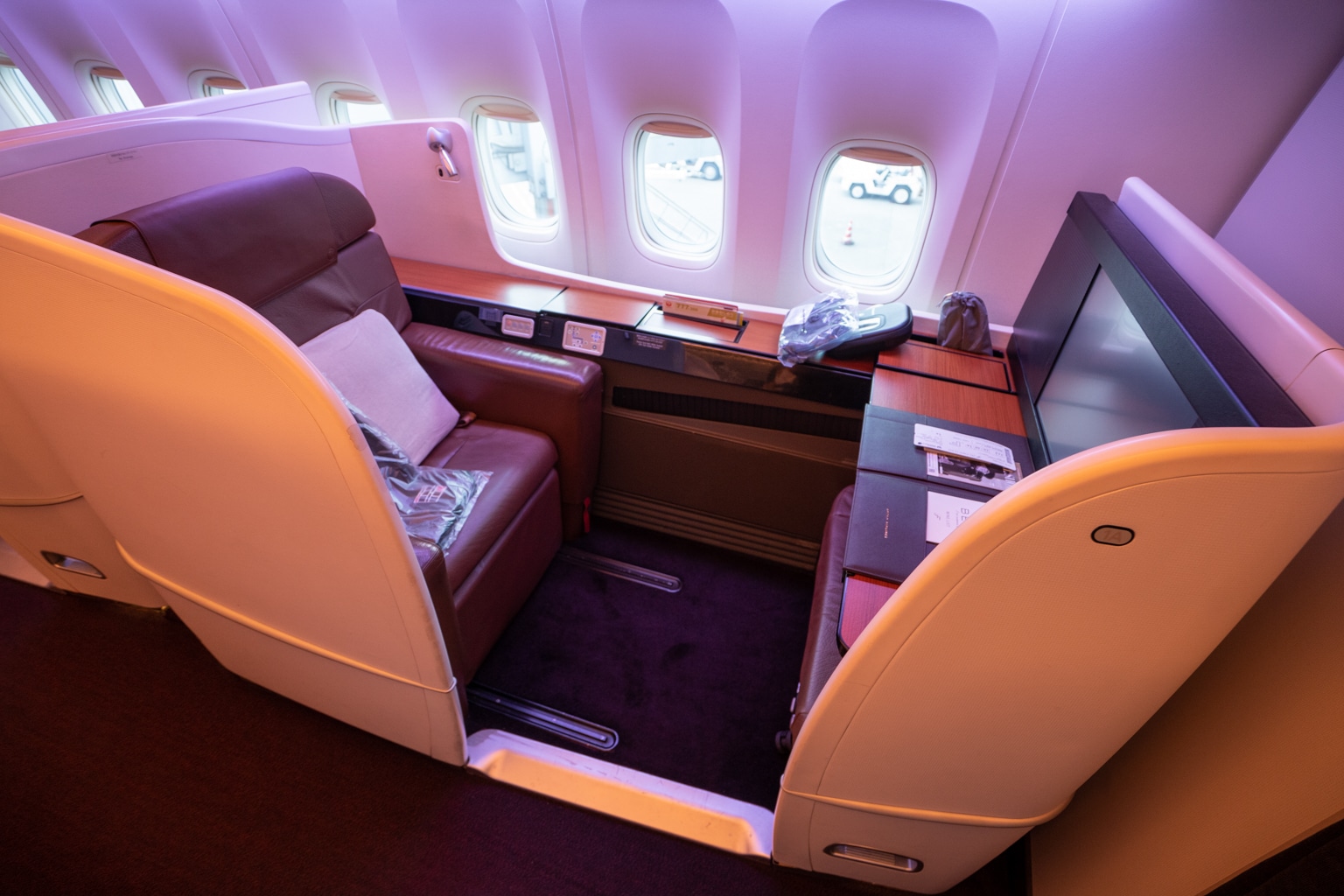
Storage Space
Both suites of these rival airlines have several storage compartments alongside and below their consoles, with ample surface space and additional storage space below the ottomans.
However, on ANA, it’s a relatively thin space, which is just large enough for a backpack or a much smaller personal item. On JAL, you’ll find that the storage space is much larger, and you can almost certainly fit a regular carry-on item with ease.
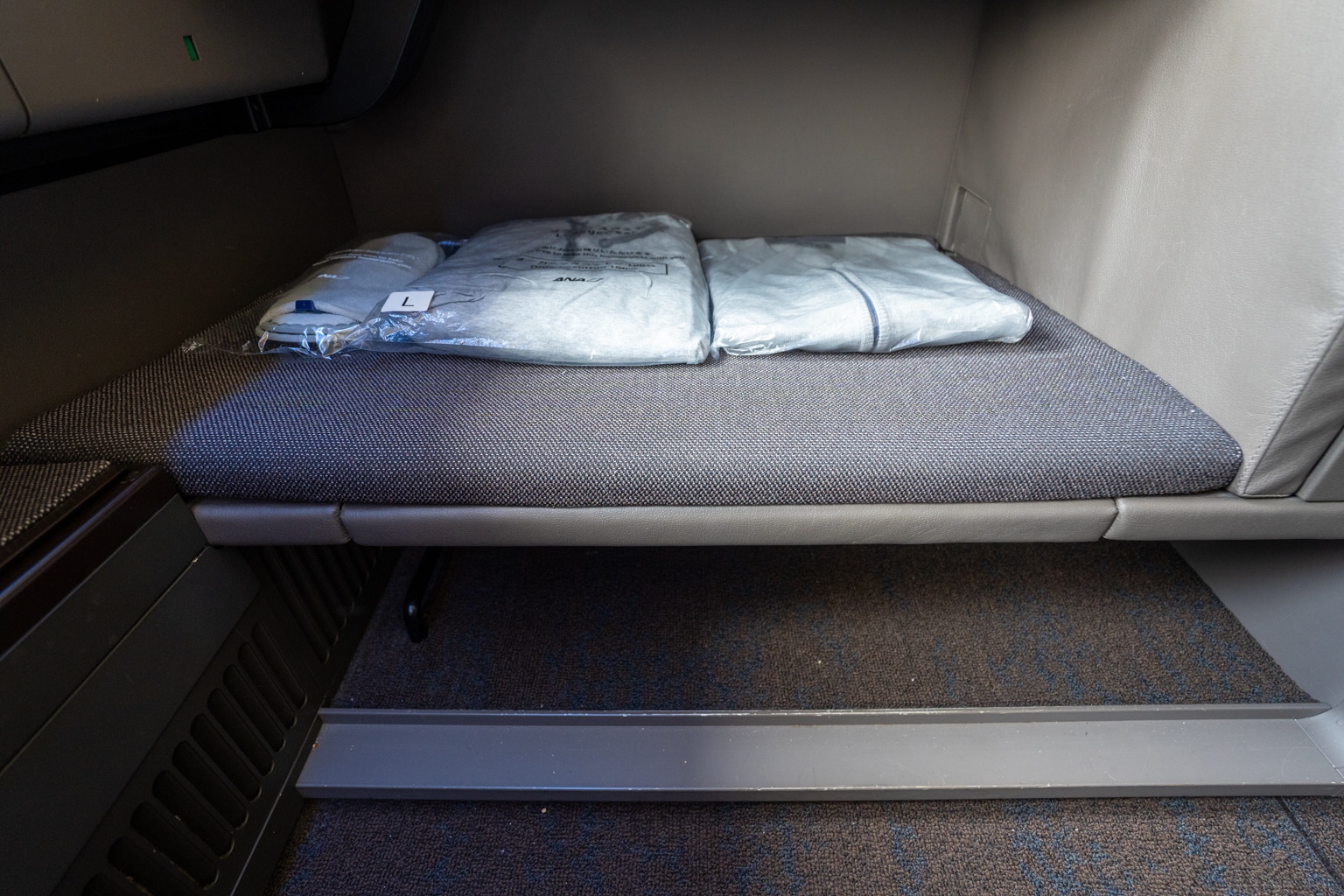

Despite this, ANA pulls ahead with two sets of literature pockets, with one at the top of the seat wall and the other nestled down below. Another storage unit is located near the entertainment screen, and lastly, on the wall nearest to the aisle, a garment cabinet is built into the wall.
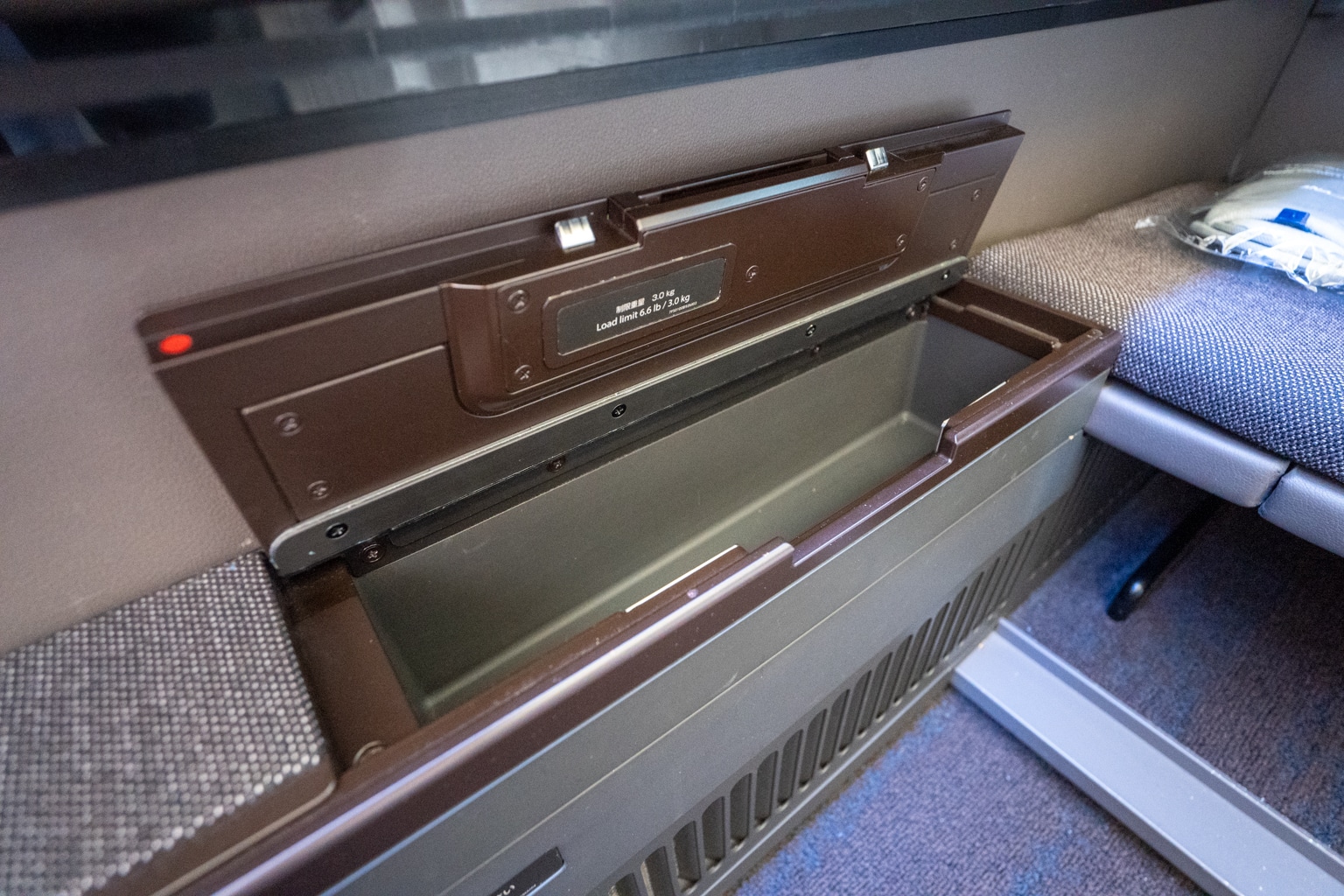
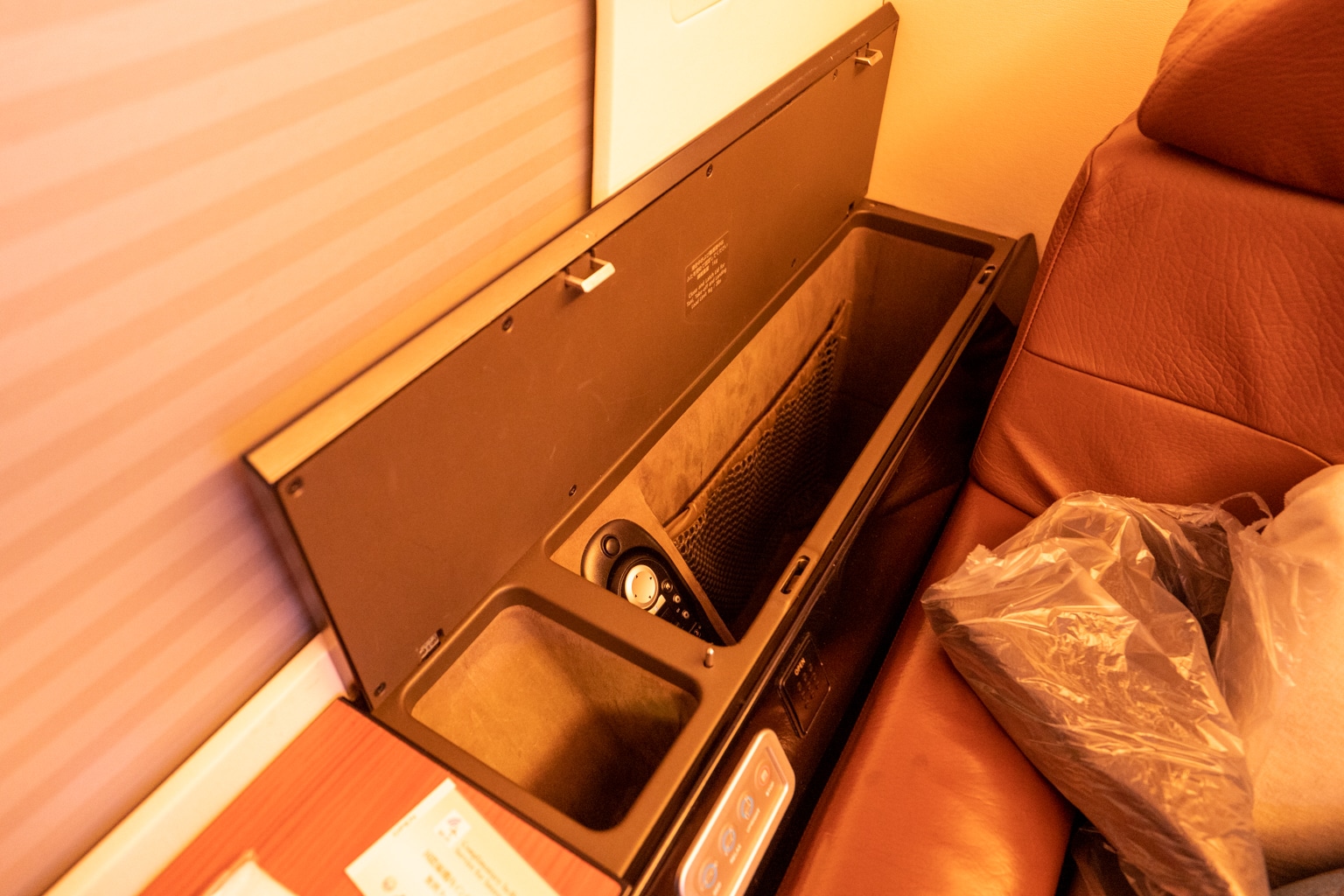
Additionally, the charging port and USB outlet onboard JAL First Class are located at the far end of the seat console, making them somewhat out of reach without a longer cord. Onboard ANA, they’re more centrally located, below the centre of the console.
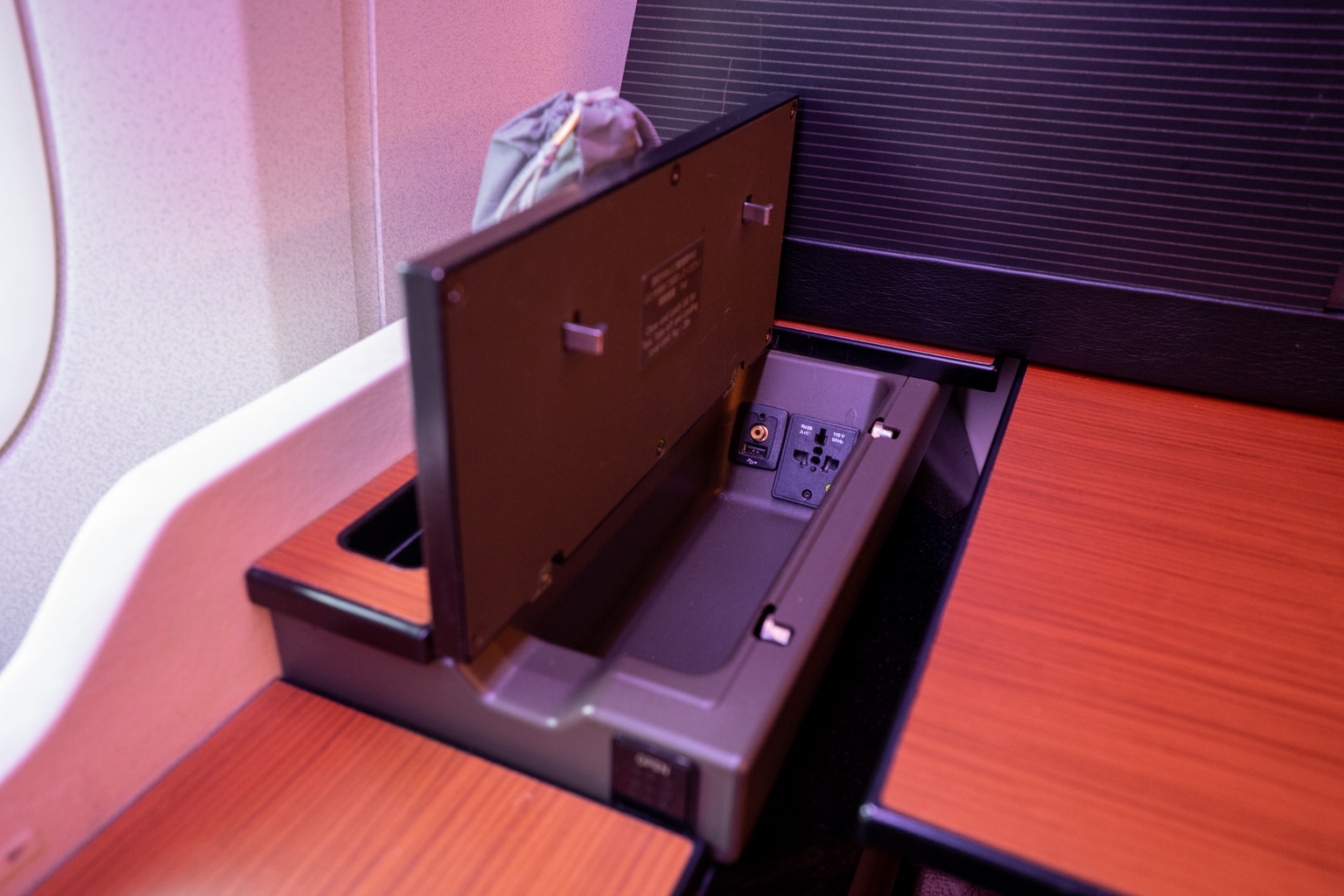
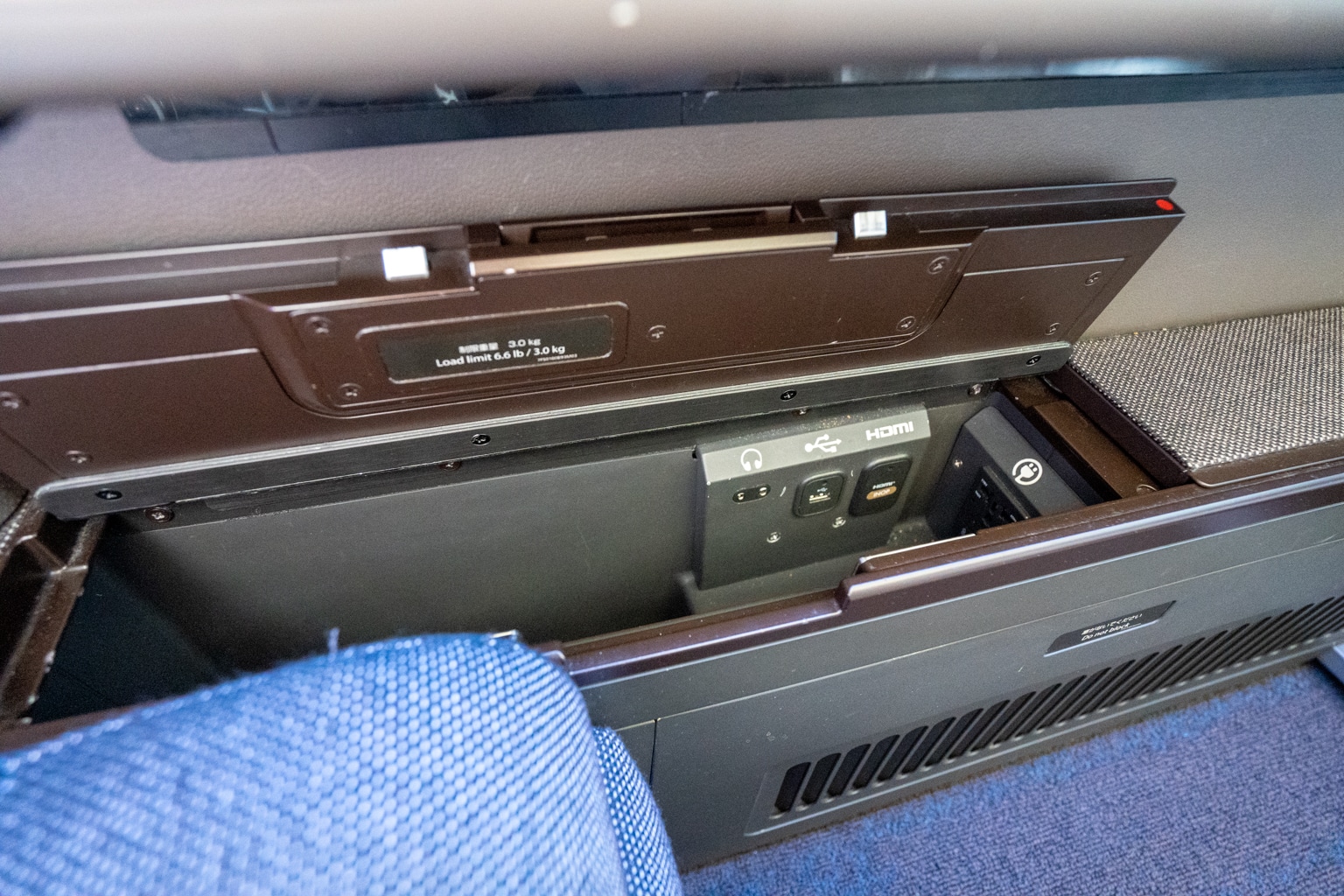
Tray Table
Both First Class products have a tray table stowed at the far end of the suite, underneath the entertainment screens. The tray tables are unlatched by pulling on a handle, and can slide back and forth into the dining position.
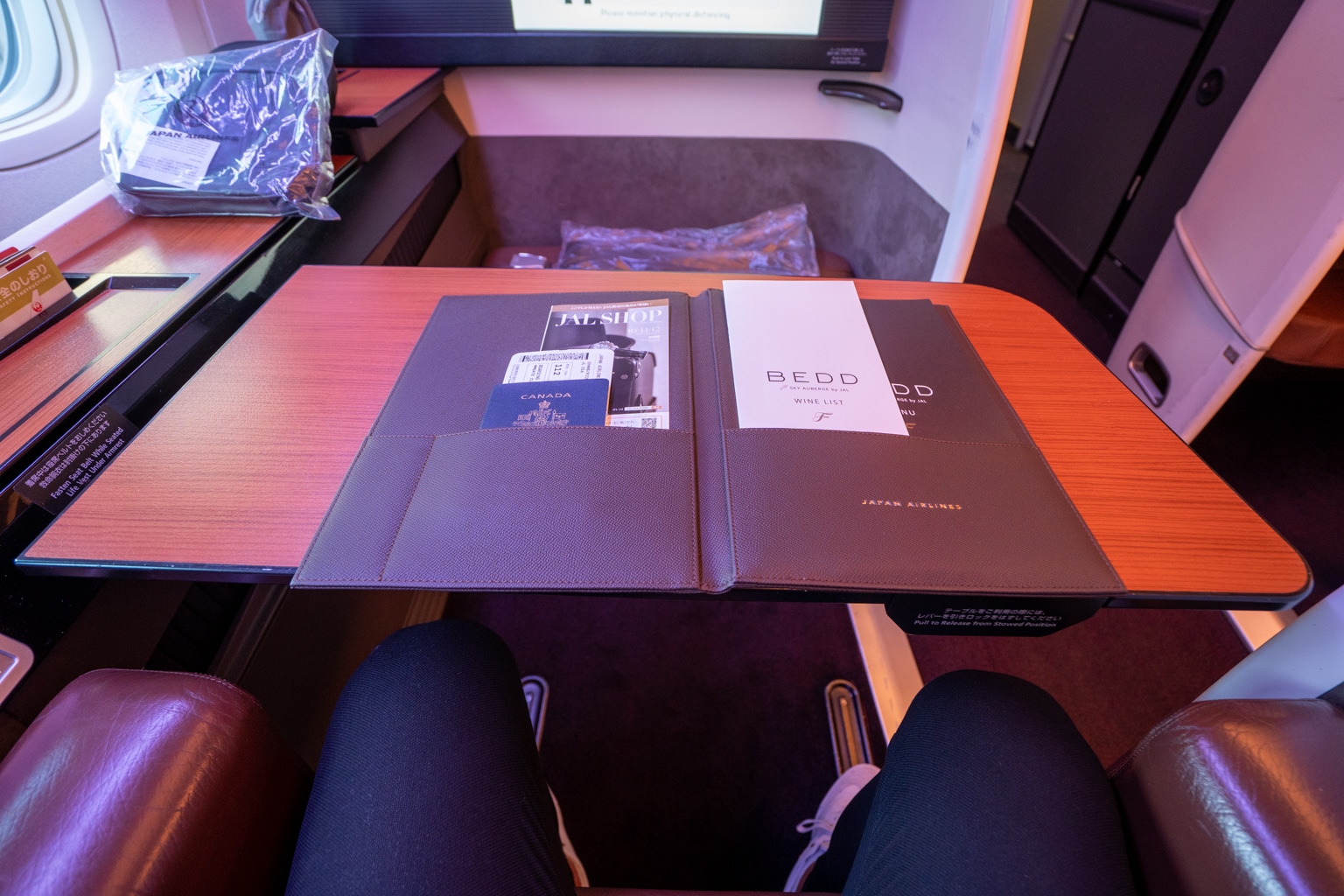
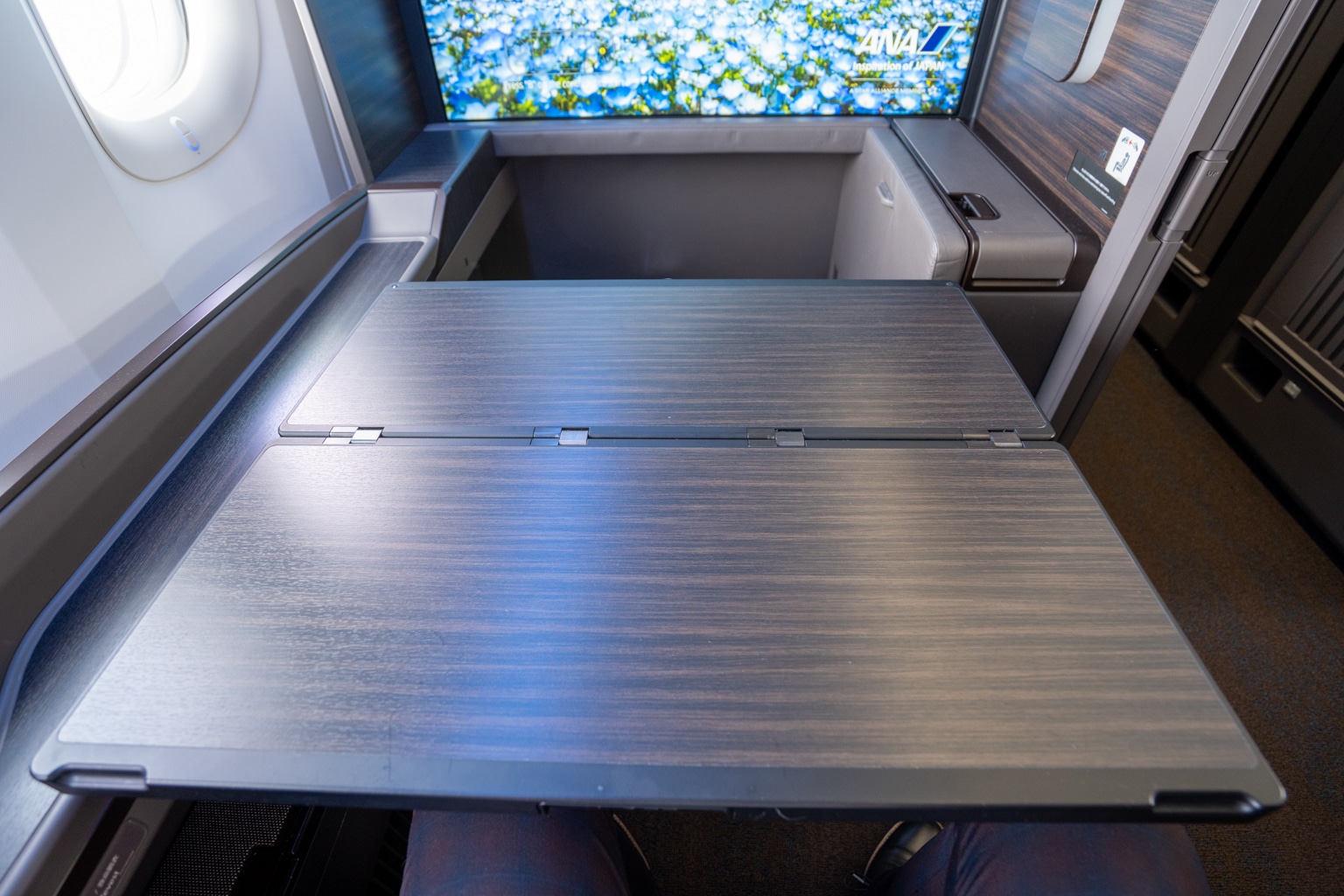
One notable difference is the tray table onboard ANA can be folded out into a full-sized table, thus offering substantially more surface space than JAL’s.
Seat Controls
On ANA, the two seat controls are right next to the entertainment controller, within easy reach.
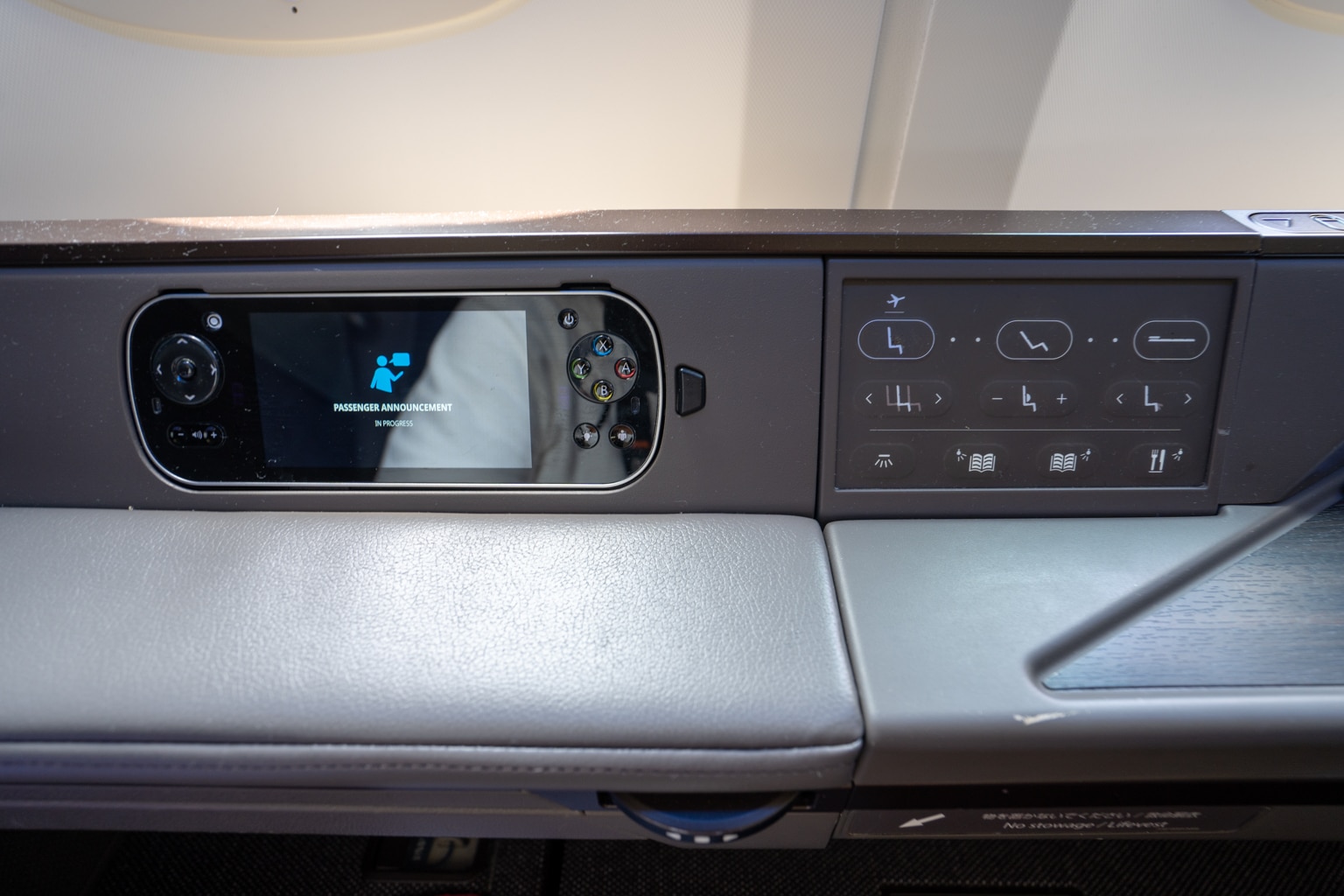
Control of the angle, recline, and lie-flat positions are available in the front-row controls. Furthermore, the leg rest and back support positions may be adjusted, and the entire seat can be moved forward or backward using the second row of controls.
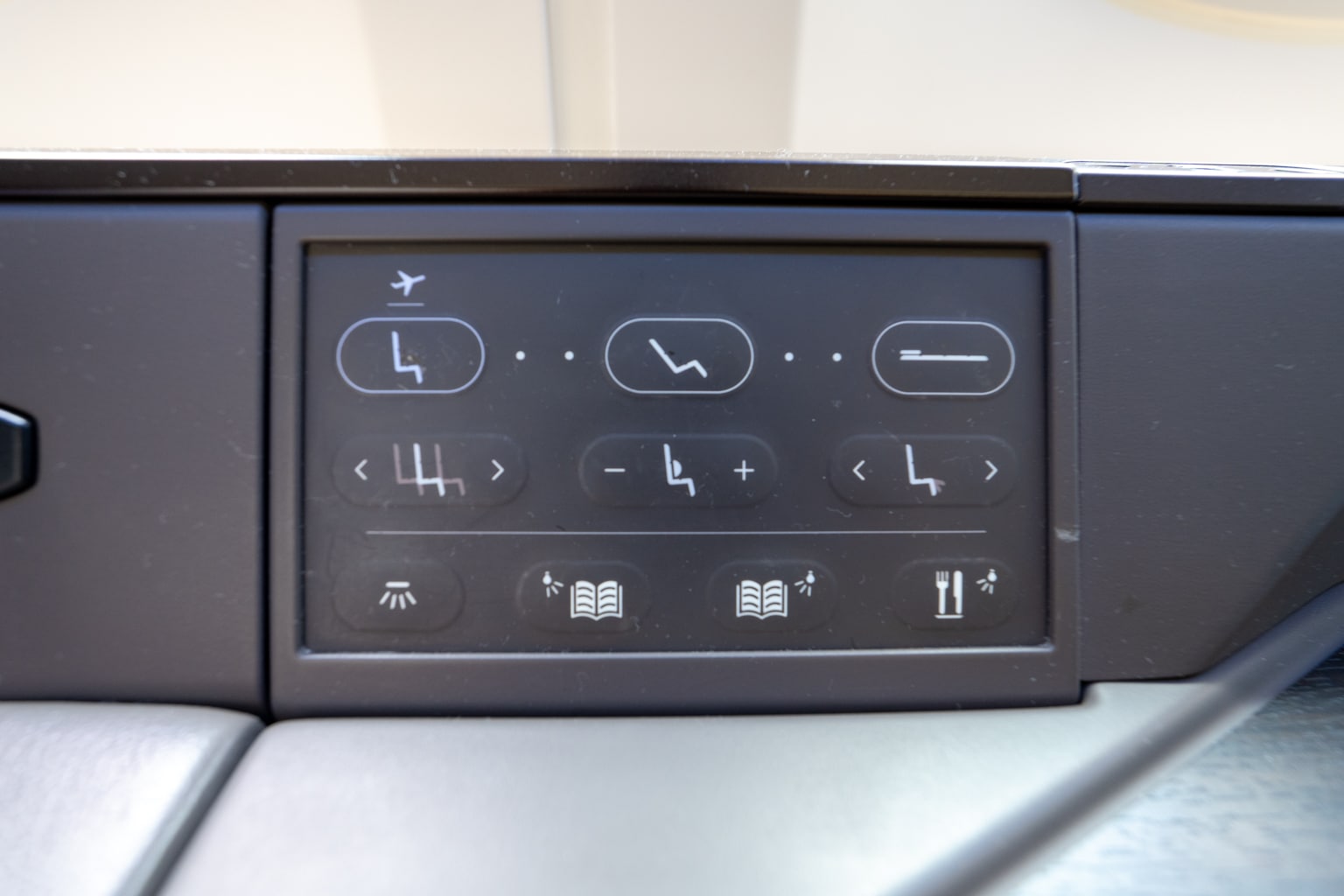
A comparable configuration is used by JAL, which has two sets of seat controls that are conveniently placed on the left side of the suite, just below the console. The seat may be adjusted to recline up, down, or into a lie-flat position using the first set of controls.

The headrest, base, and footrest of the seat may then all be fully customized using a more extensive set of controls, as well as adjustment of the footlight and the lumbar support.
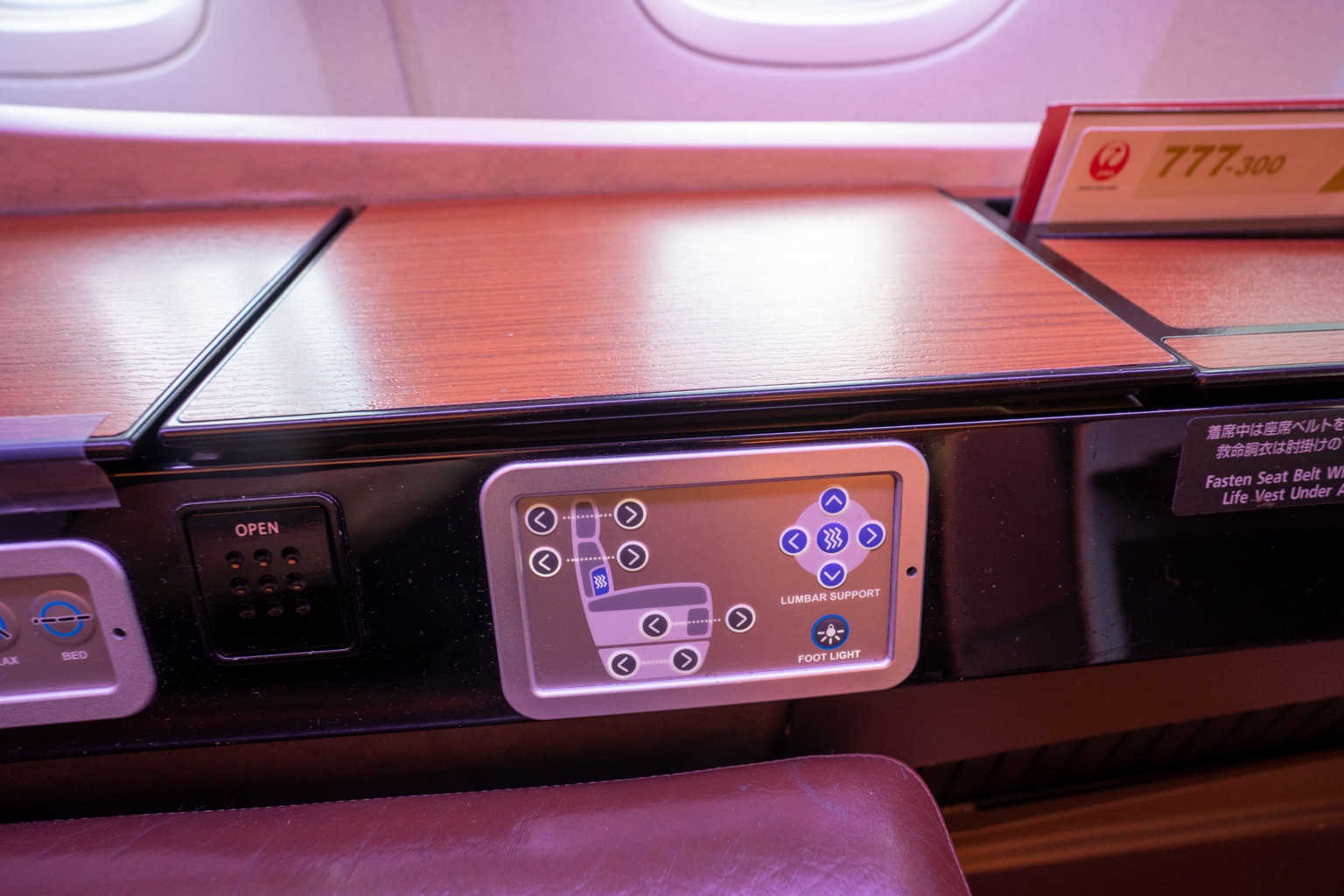
Bed
These two First Class products offer a fully reclined lie-flat bed. In terms of specifications, in lie-flat mode, the seat on the ANA’s The Suite is 76 inches in length when in lie-flat mode and 33 inches wide.

In comparison, the bed on JAL First Class is 78.5 inches long and 33 inches wide.
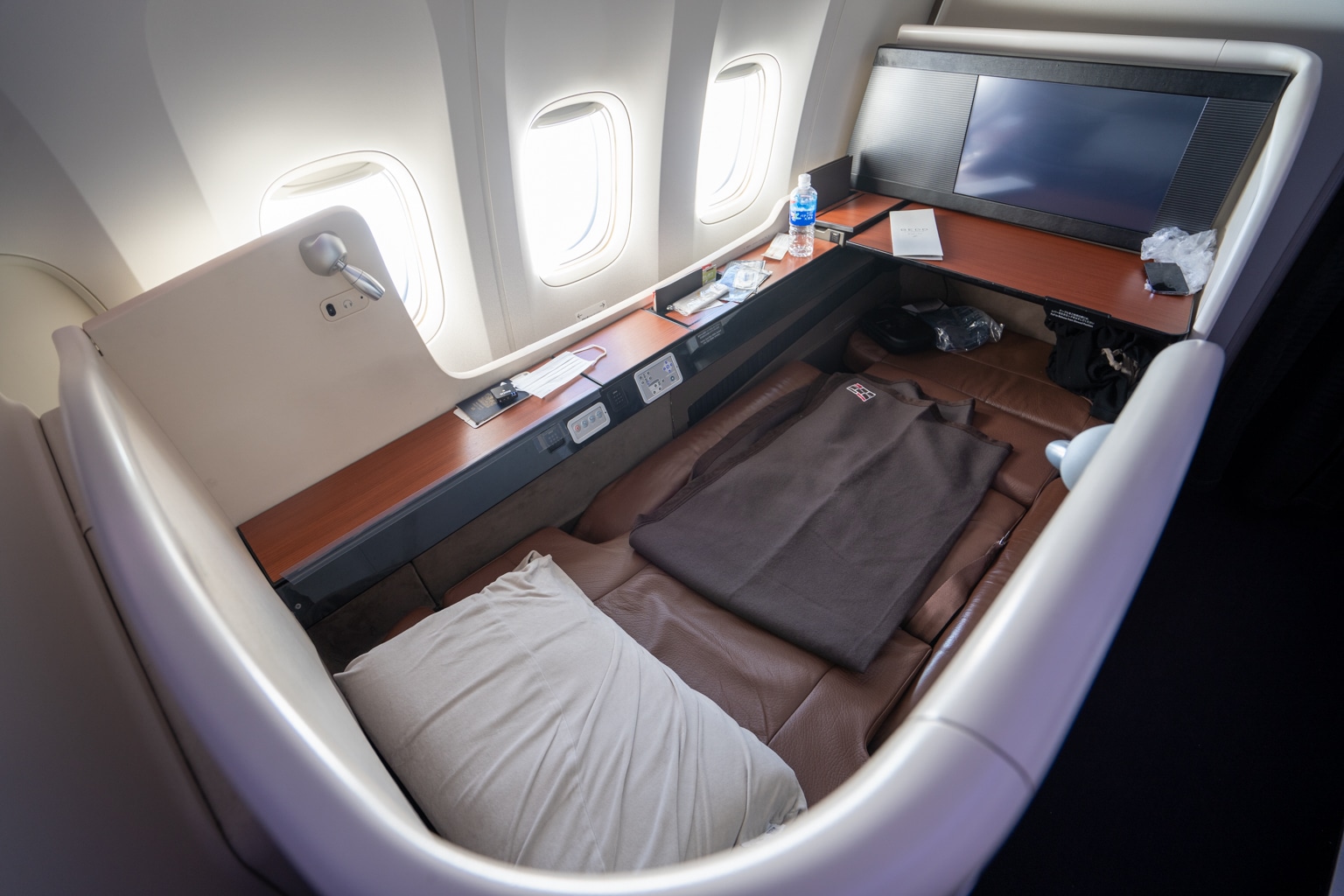
Both offer an ample amount of real estate and elevated comfort. JAL has a slight edge with a longer length; however, it’s worth noting that ANA’s new First Class soft product is equipped with award-winning “Nishikawa AiR” mattress padding, featuring a three-layered design to improve sleep.
Verdict: When all aspects of the First Class hard products are taken into consideration, ANA emerges as the winner here. The modern ANA First Class suite, complete with a massive entertainment screen, sliding doors, and deluxe bedding, is much more competitive than the older, less private suite on Japan Airlines First Class.
Amenities
On ANA, the flight attendants come by and offer a tray with a host of in-flight amenities, including ear plugs, dental kits, and eye masks.
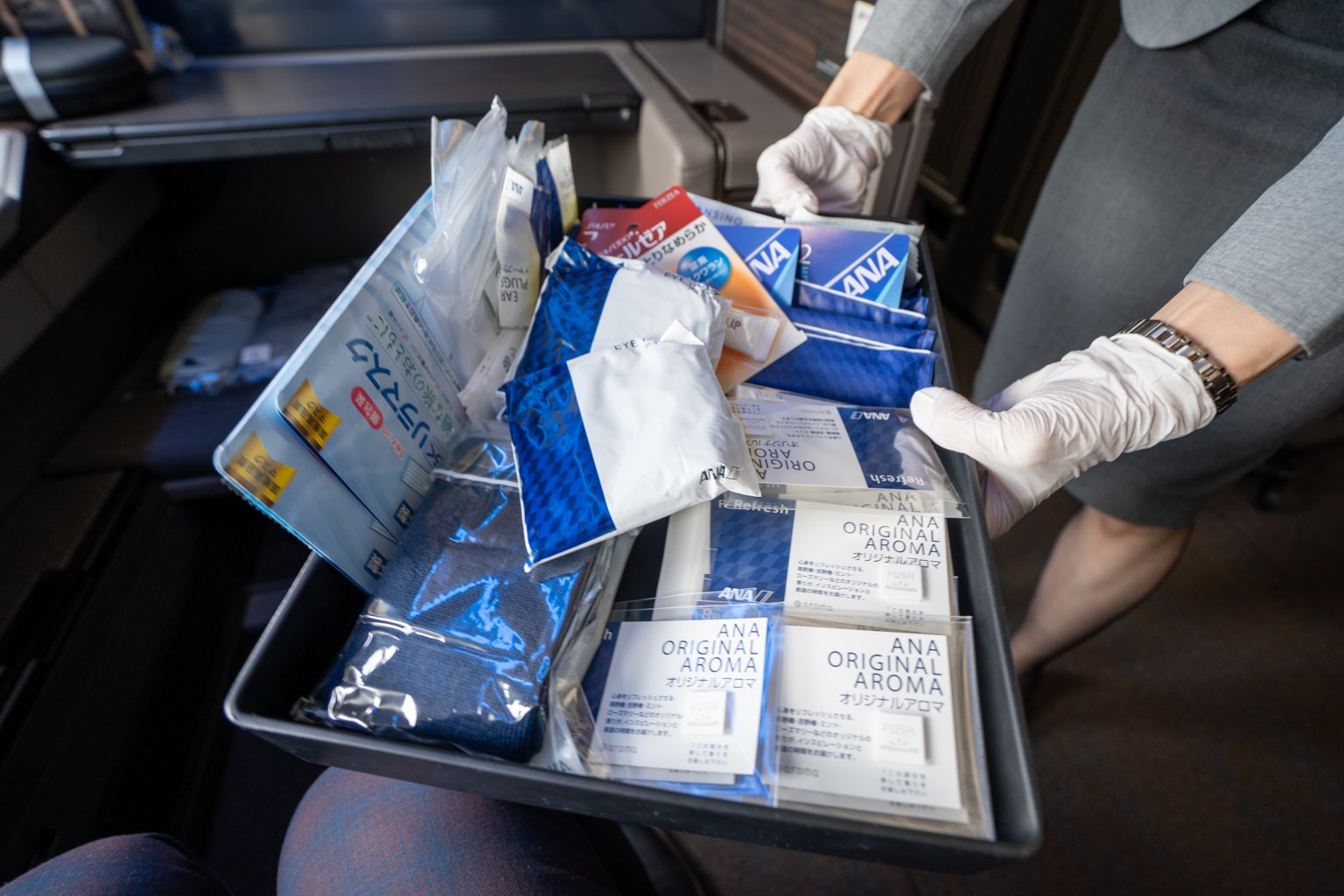
Following this, a signature kit comes in a chic but classic beige and brown leather ANA-original Globe-Trotter Pouch. Inside is a luxurious Shiseido “The Ginza” Essence Empowering skincare set, which includes face wash and night cream, alongside a few other items, such as socks and warming pads.
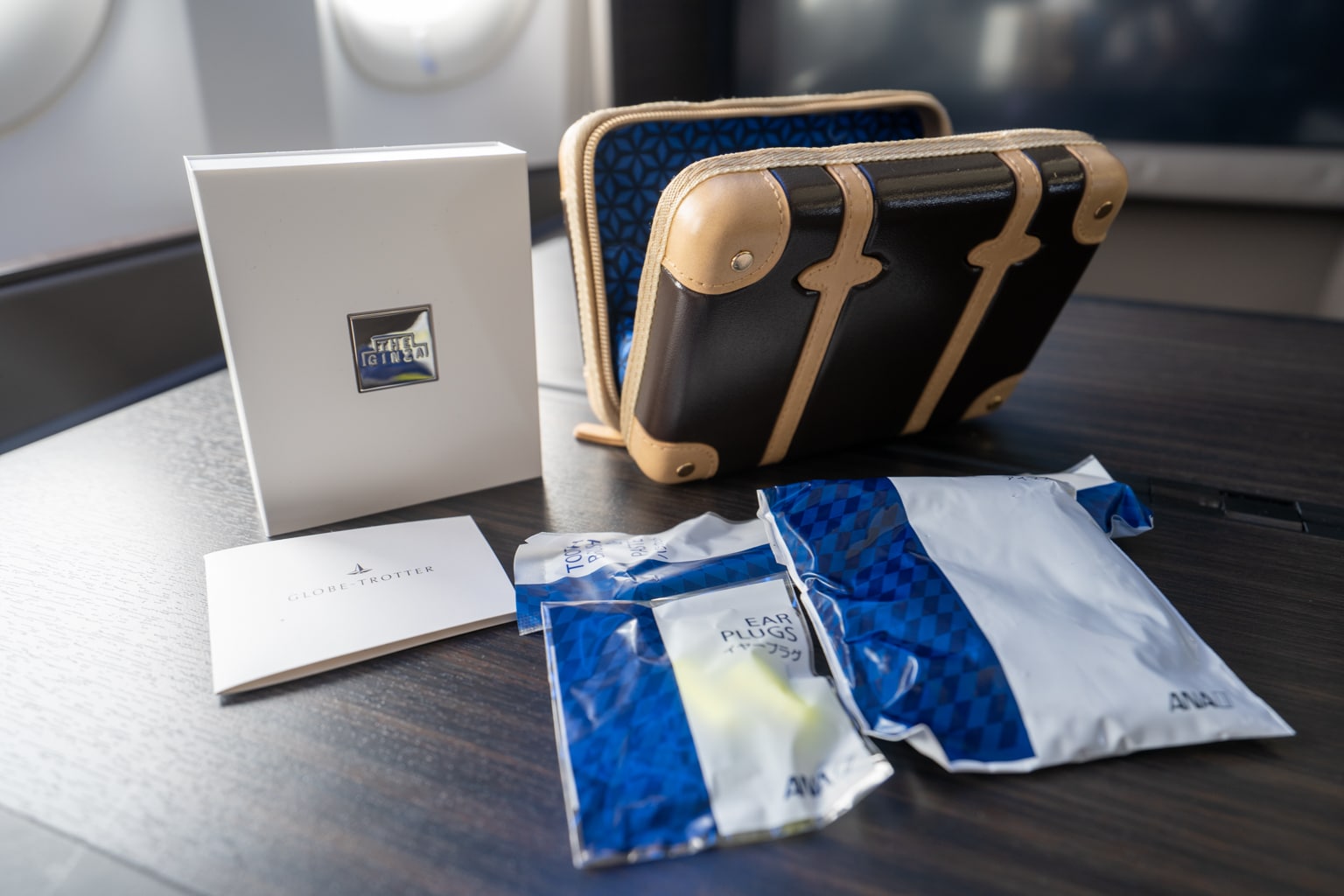
Japan Airlines First Class also comes with two amenity kits. The first contains all the standard offerings by Zero Halliburton in a blue leather casing.
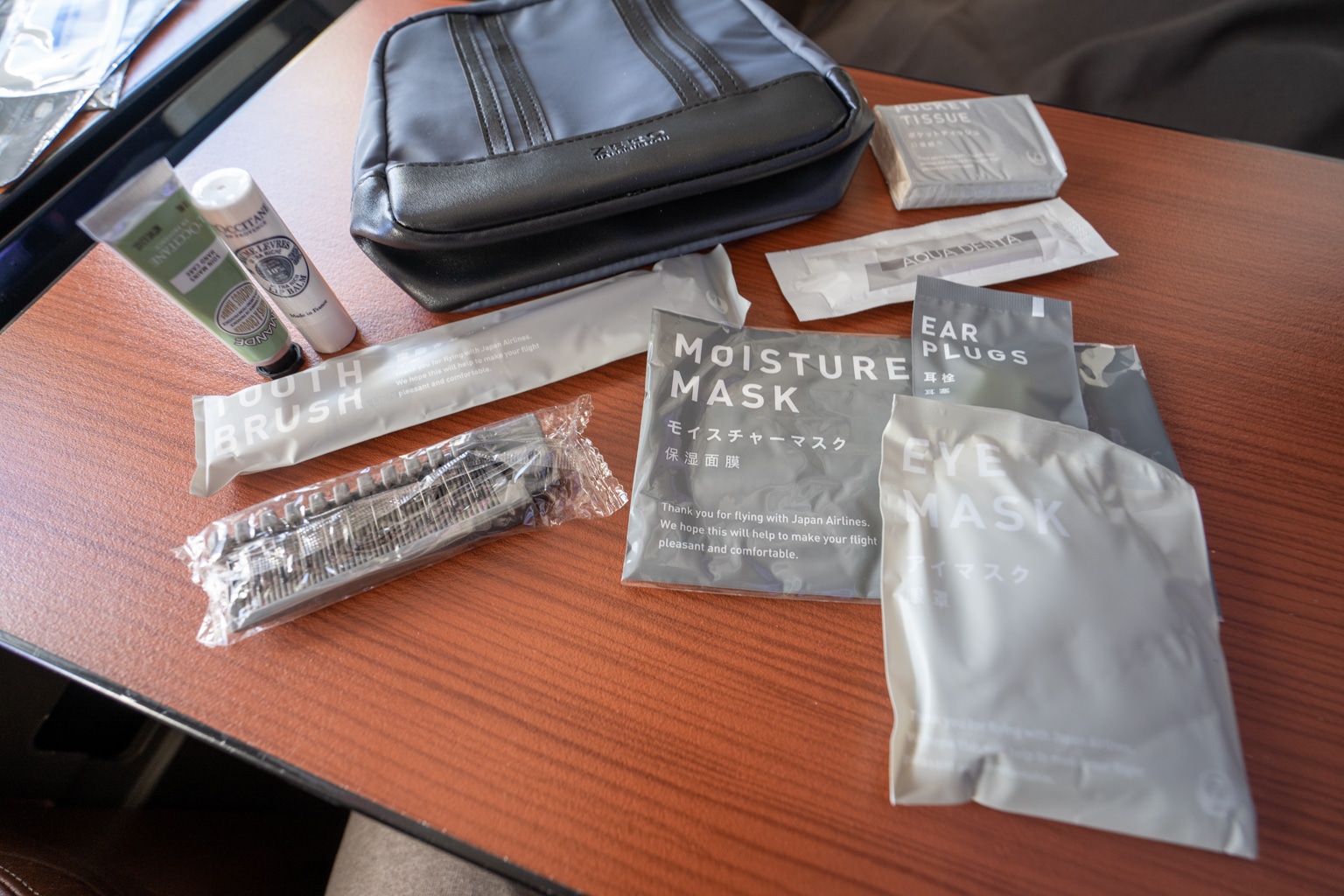
Following this, elevated skincare kits, in the form of a Shiseido kit (for men) or a Clé de Peau Beauté kit with facemasks and lotions (for women), are handed out.
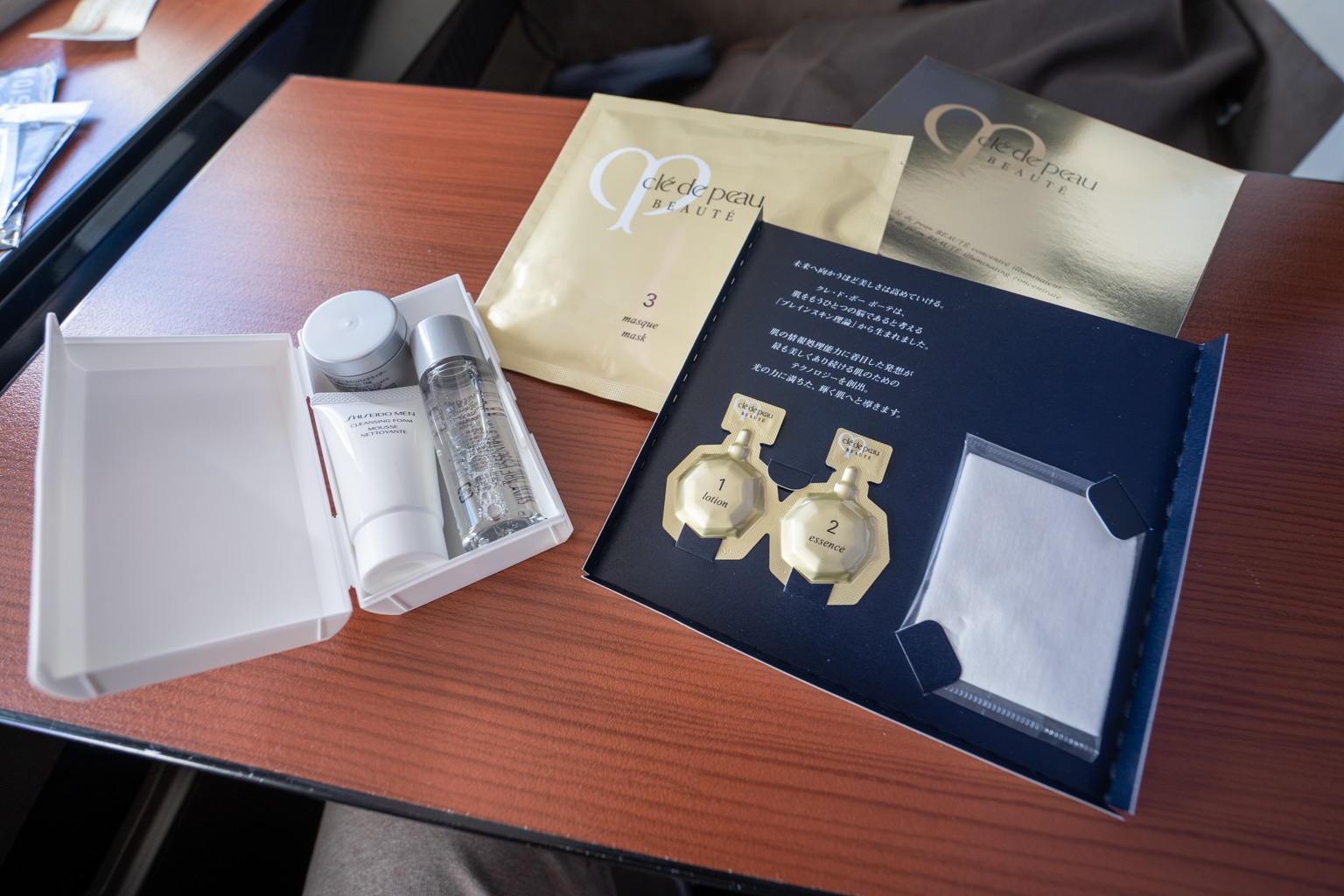
Furthermore, both JAL and ANA provide top-notch two-tone grey pajamas.
Verdict: When it comes to the amenities round, we have another draw, since the two offerings are almost identical.
Meal Service
Both ANA and Japan Airlines have world-class Japanese washoku menus, which are indisputably the main attractions of both First Class experiences.
ANA offers an excellent demonstration of authentic Japanese cuisine, with plenty of creativity and beautiful presentations. At the same time, dining in Japan Airlines First Class is among the best in the game, offering an intricate array of Japanese flavours.
Prior to the main dish, the ANA menu features five courses, including sakizuke (“a taste of things to come”), zensai (“a selection of morsels”), mushimono (steamed cuisine), nimono (simmered plate), and kobachi (“tasty tidbits”).
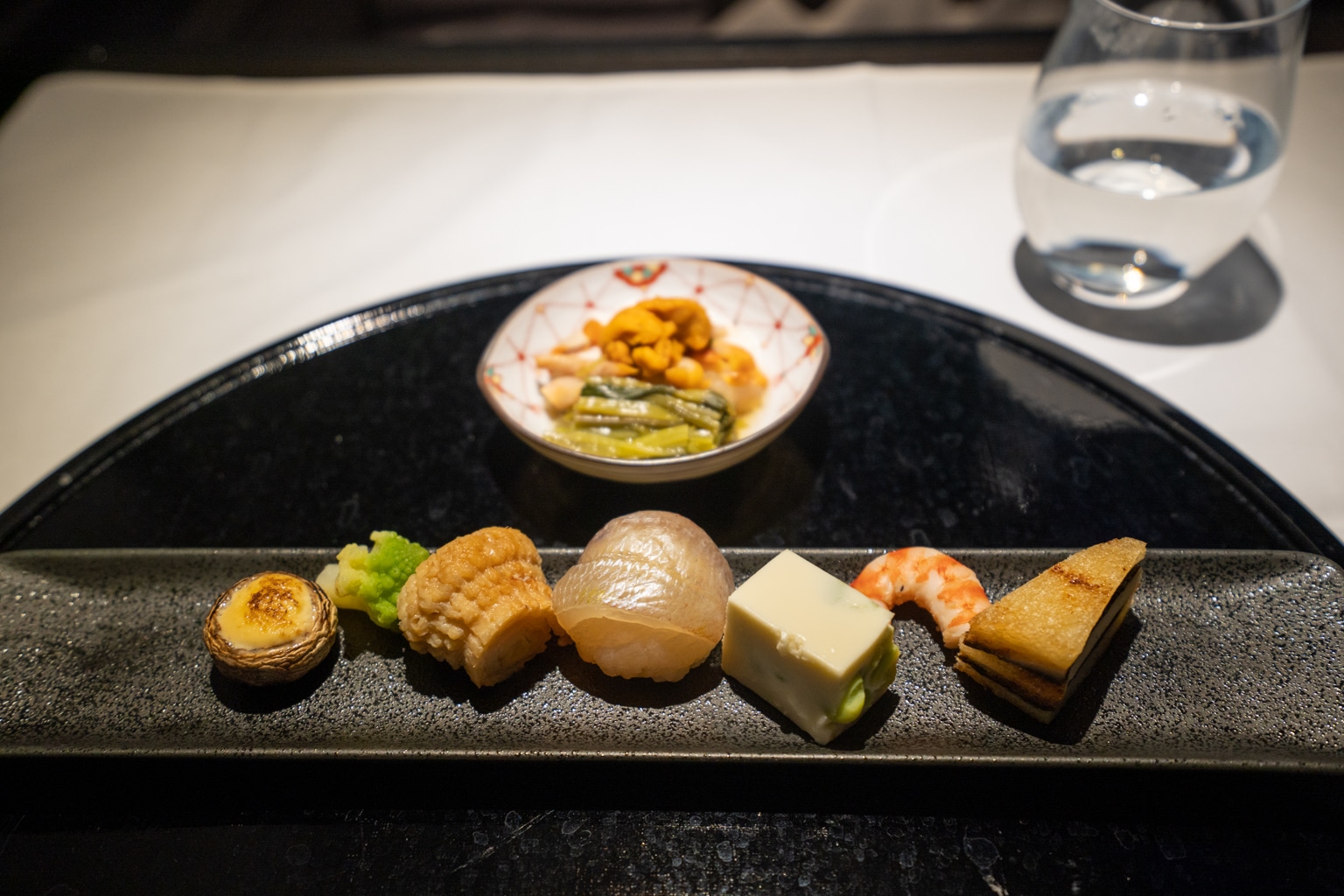
Japan Airlines begins the First Class meal service with a presentation of the “seasonal five colourful delicacies” dish, which is followed by a soup course and a sashimi dish prior to the main event.
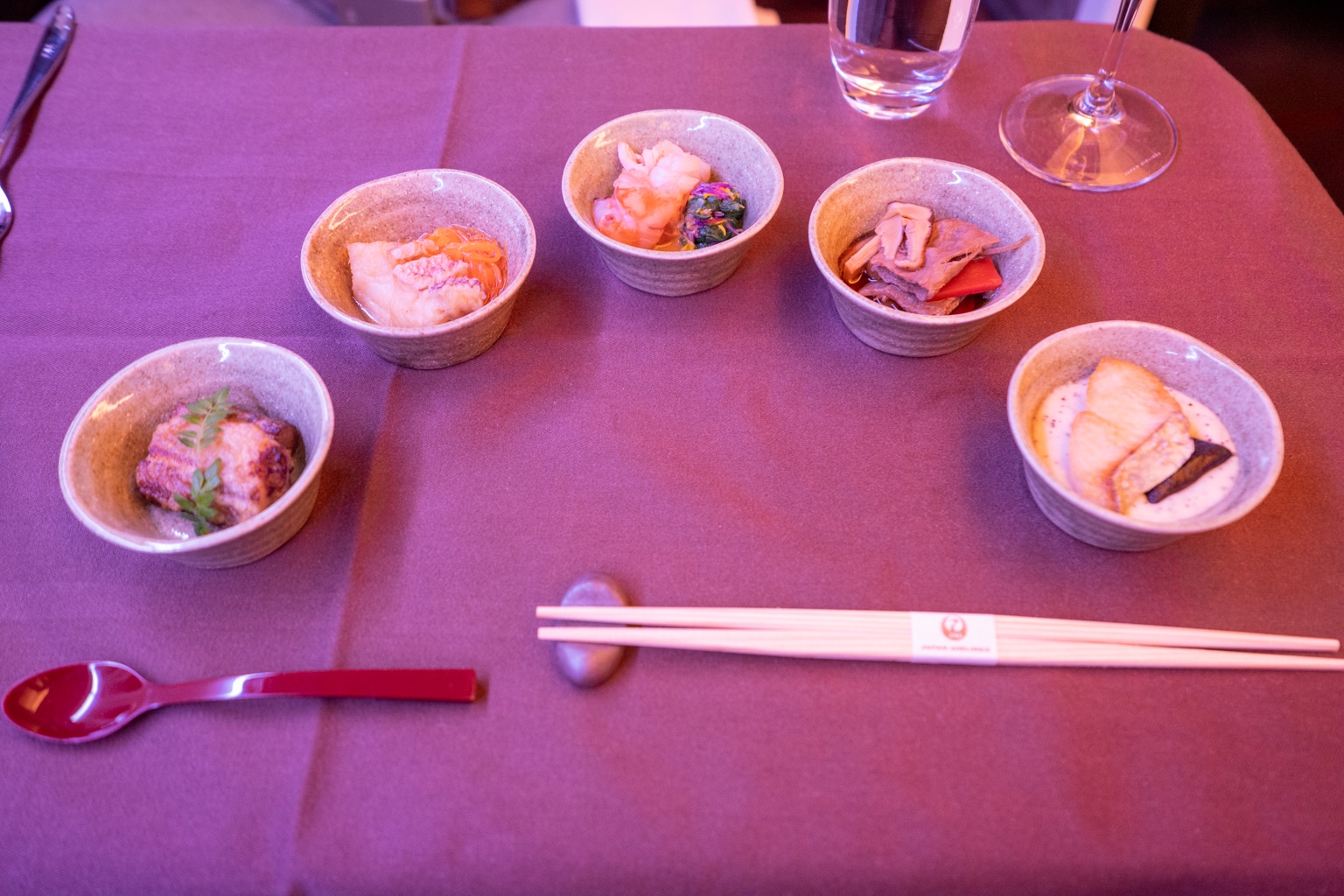
Both airlines are very creative in their main course for First Class passengers. You can expect to find a main dish accompanied by an elevated side of rice, as well as a bowl of miso soup.

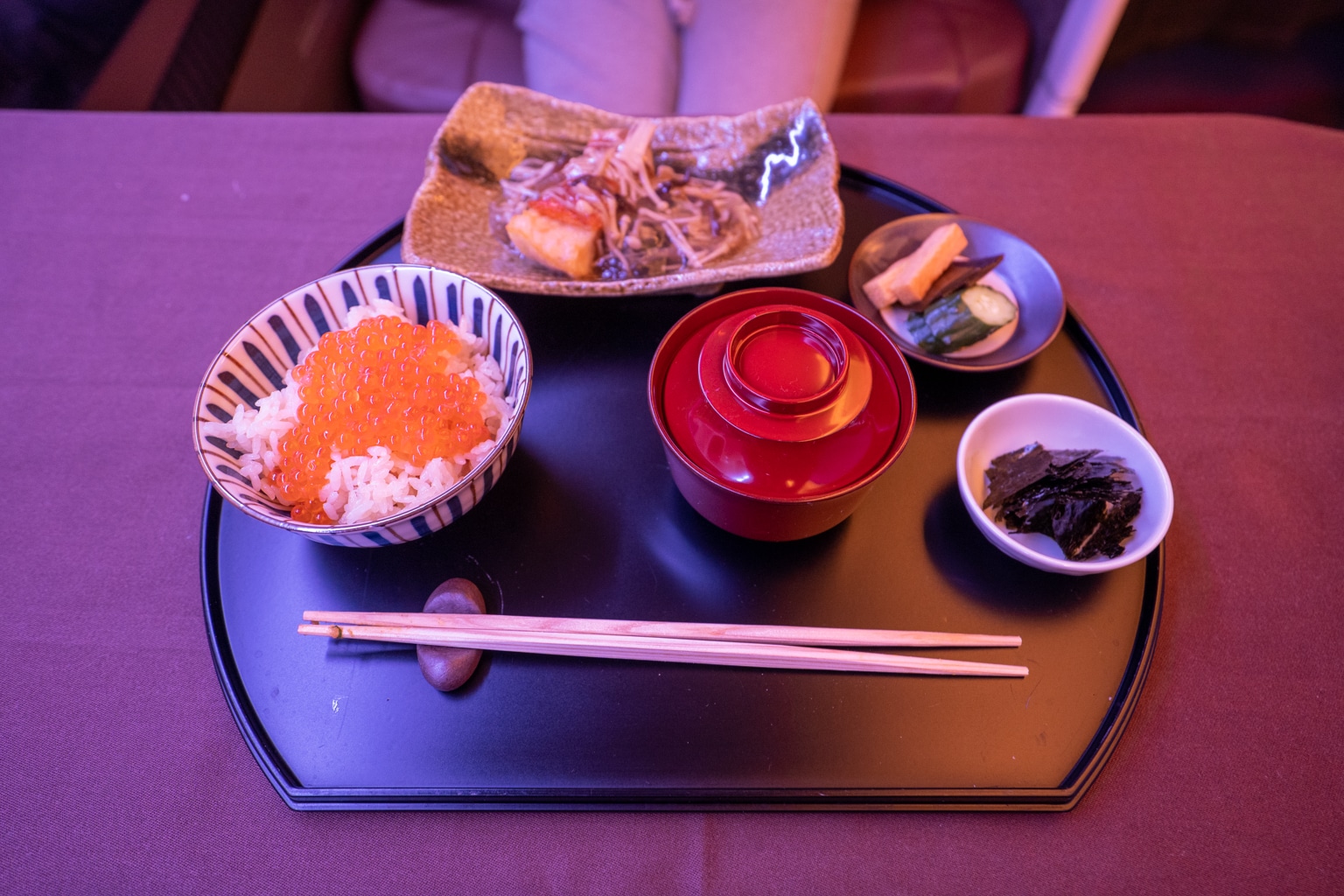
To wrap things up, you’ll have your choice of desserts on both airlines, bringing a sweet end to the main meal service.
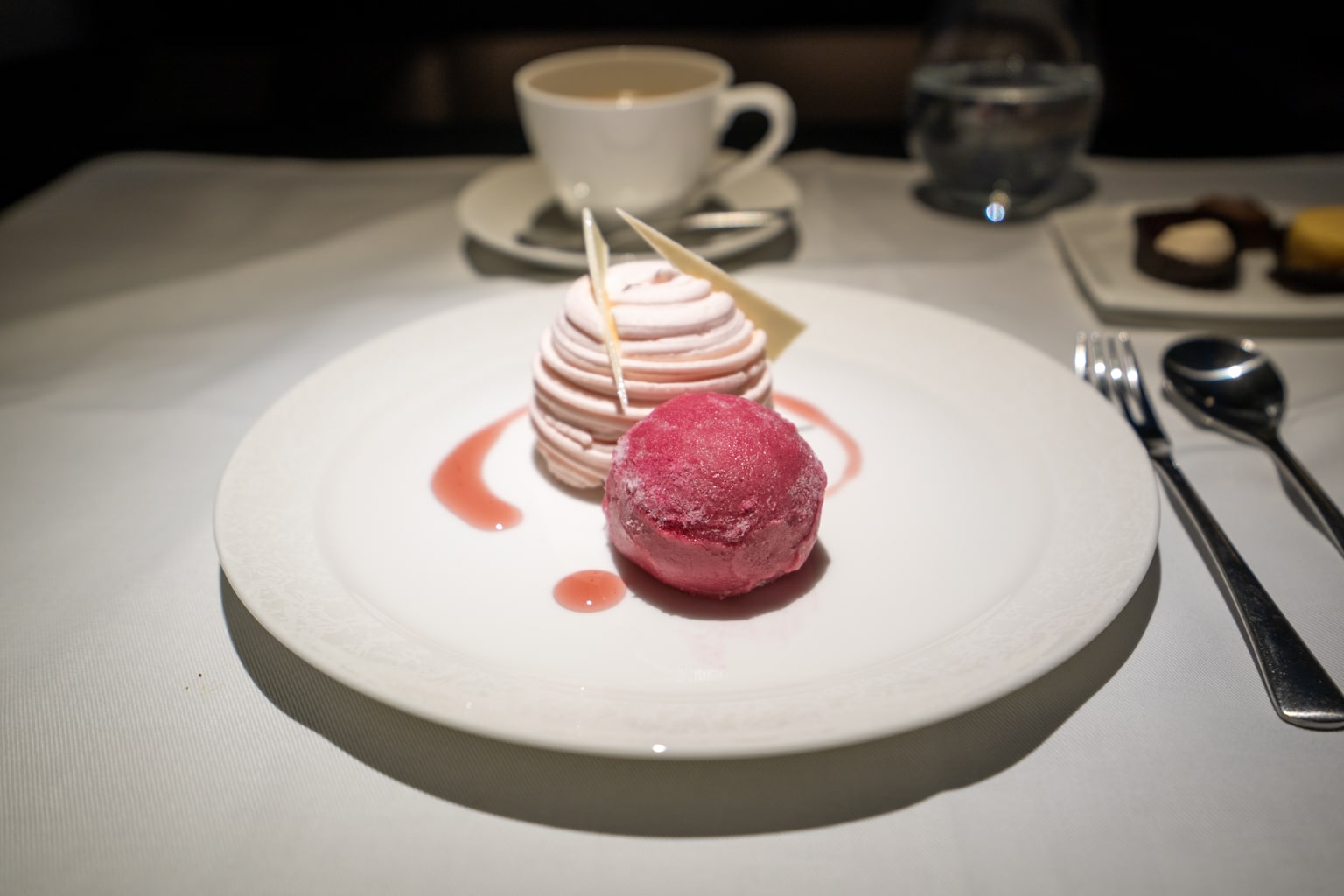
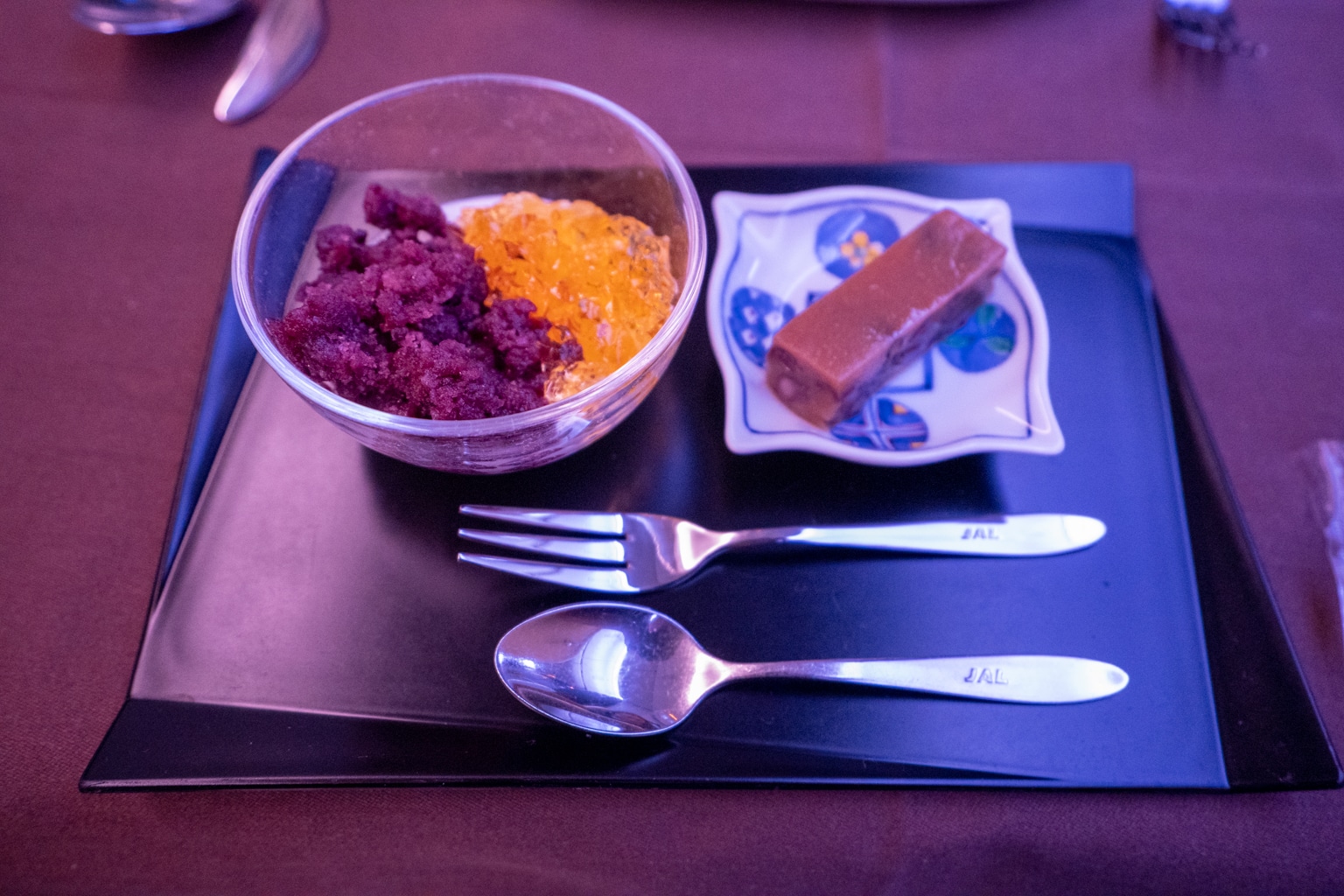
Japan Airlines has historically served caviar on the western menu, while ANA continues to do so. However, on a recent Japan Airlines First Class flight, caviar wasn’t offered separately, but was rather incorporated into the sashimi plate.
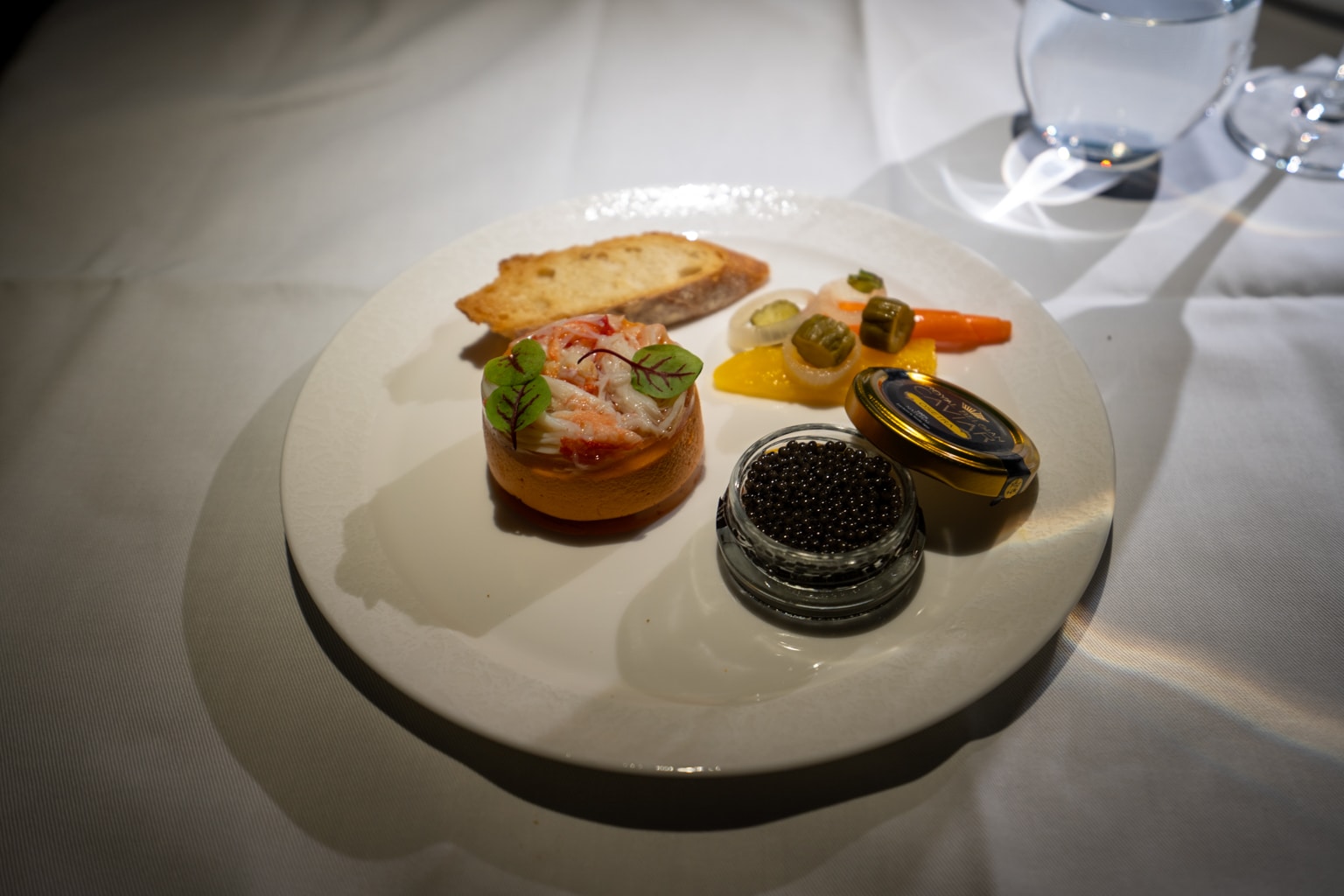
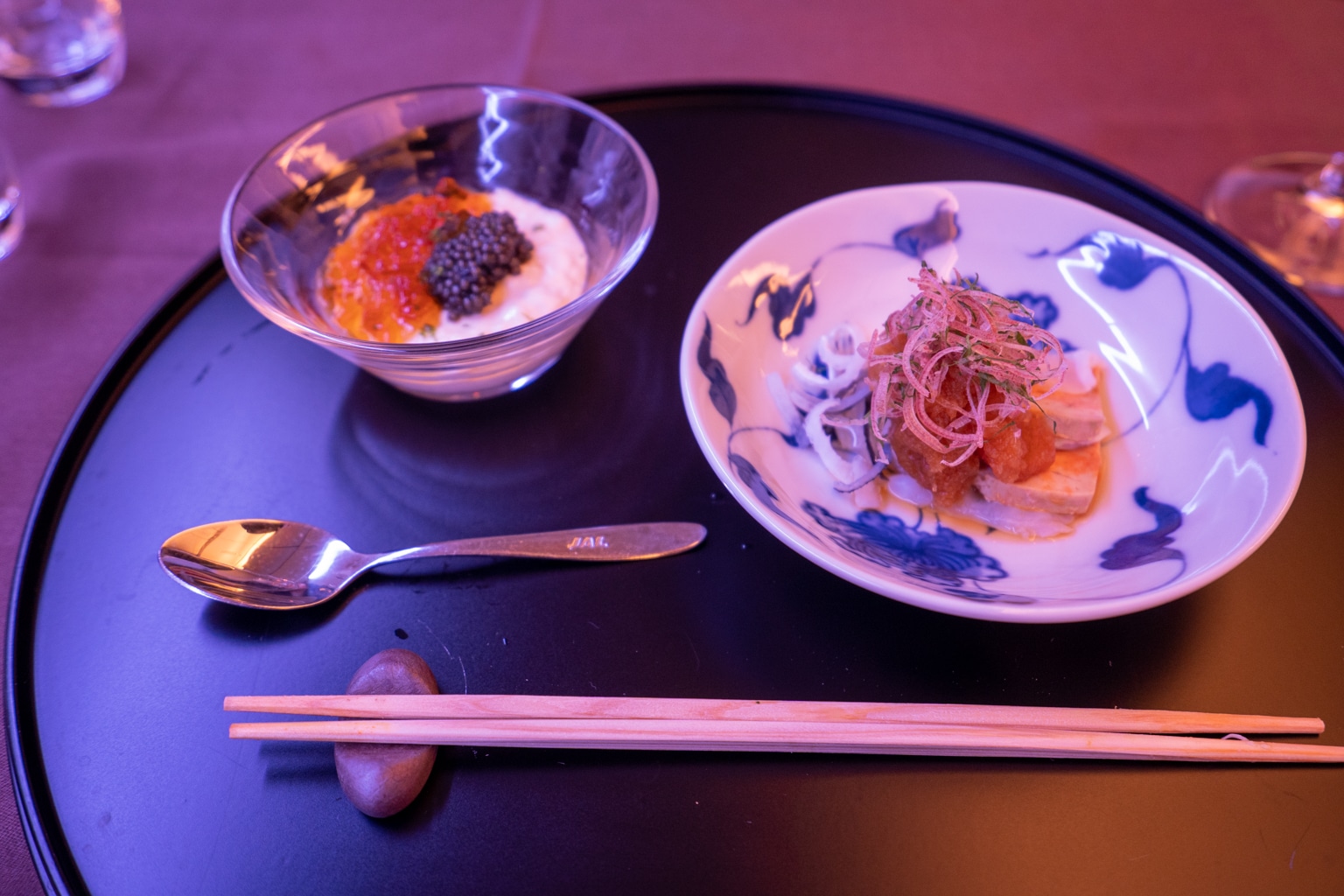
Lastly, ANA’s Japanese menu has an “If you prefer” section, which consists of two more plates that are presented upon request.
Verdict: Both ANA and Japan Airlines highlight the finest Japanese food in First Class. The diversity of the Japanese washoku dinner onboard ANA is outstanding, but the servings of each dish are kept to a minimum.
However, I found the dishes on Japan Airlines were to be more creative and adventurous, pushing the boundaries of exquisite cuisine as a top restaurant on the ground should. Therefore, I’ll award it to Japan Airlines here, but only by a mere smidge, because ANA’s onboard dining is almost equally outstanding.
Drinks
Both First Class experiences offer an incredible selection of beverages, with a variety of red and white wines, premium sake, spirits, and cocktails.
When it comes to premium Champagne, the beverage menu onboard ANA First Class can include Krug Grande Cuvée, Limited Edition Bollinger 2007, and Deutz Blanc de Blanc 2012.
Onboard JAL First Class, you can find Billecart Salmon, Comtes Taittinger 2007, and the exquisite Salon 2007, which retails for over $1,000 (USD) per bottle. However, the Salon 2007 is only available on flights departing from Tokyo, and can potentially run out during the flight, as it did on mine.
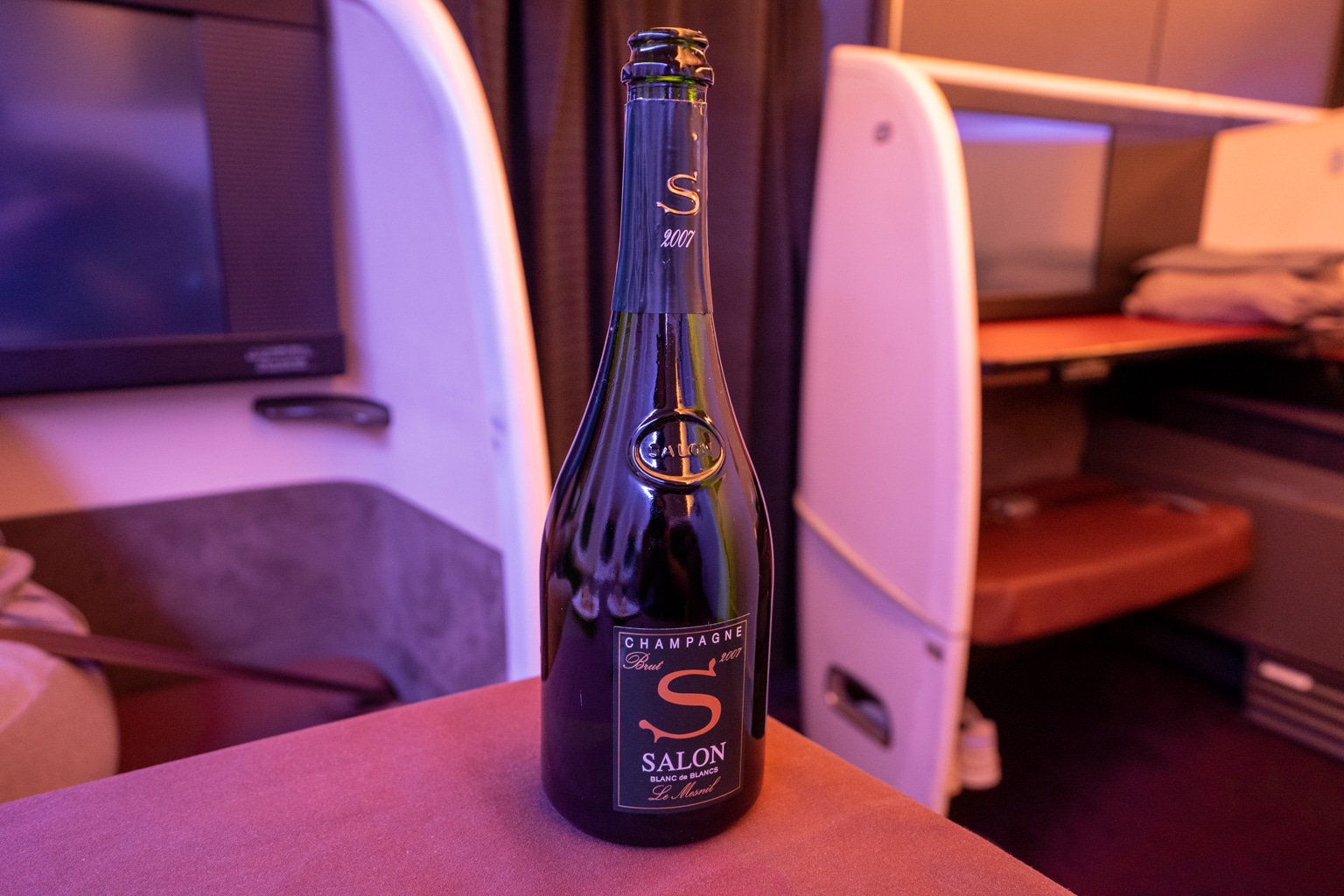
Although ANA doesn’t offer a $1,000 (USD) bottle of Champagne, they make up for it with their Suntory Hibiki 21 whiskey. This premium bottle also costs over $1,000 (USD), is only available on the New York, London, and Frankfurt routes, and is less likely to run dry during the flight.

Both airlines provide a wholesome selection of coffee, teas, and non-alcoholic drinks. The premium Queen of the Blue Deluxe royal blue tea, served in a stylish wine glass, is exclusive to JAL First Class.
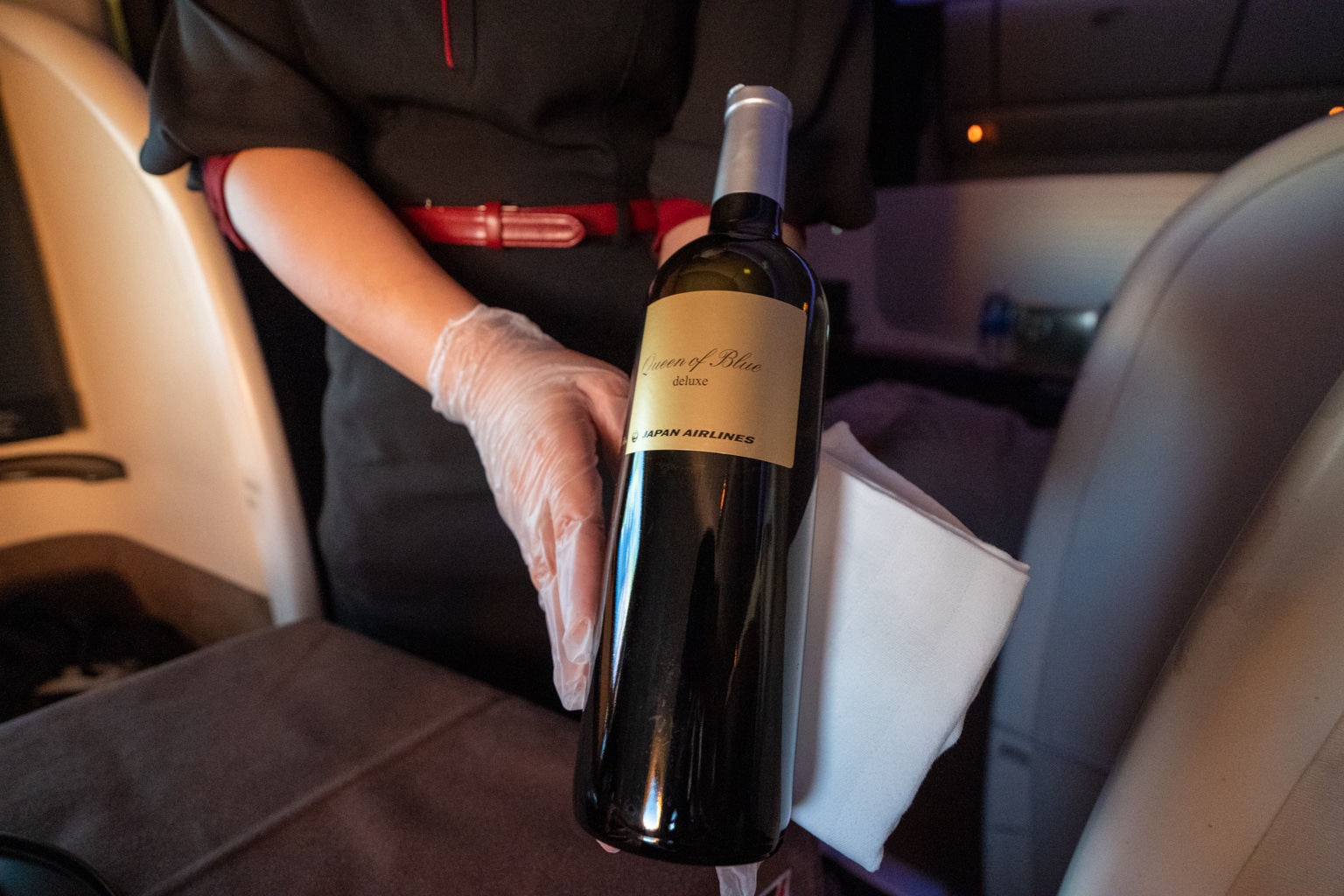
Furthermore, both airlines have a signature drink onboard. JAL offers its “Sky Time” peach and grape beverage, whereas ANA has its kabosu citrus beverage as its trademark.
Verdict: Both airlines offer impressive selections of top-shelf liquor, fine wines, and delicious signature beverages.
JAL’s Salon 2007 Champagne and ANA’s Suntory Hibiki 21 whisky offer First Class passengers the option to sip on some of the most expensive alcohol available on commercial aircraft.
Despite the strong offerings on both airlines, I’ll give the slight edge to Japan Airlines here, due to my preference for Sky Time over ANA’s kabosu.
Entertainment
The 42-inch entertainment screen installed on the new ANA First Class is cutting-edge, with a crisp 4K resolution.
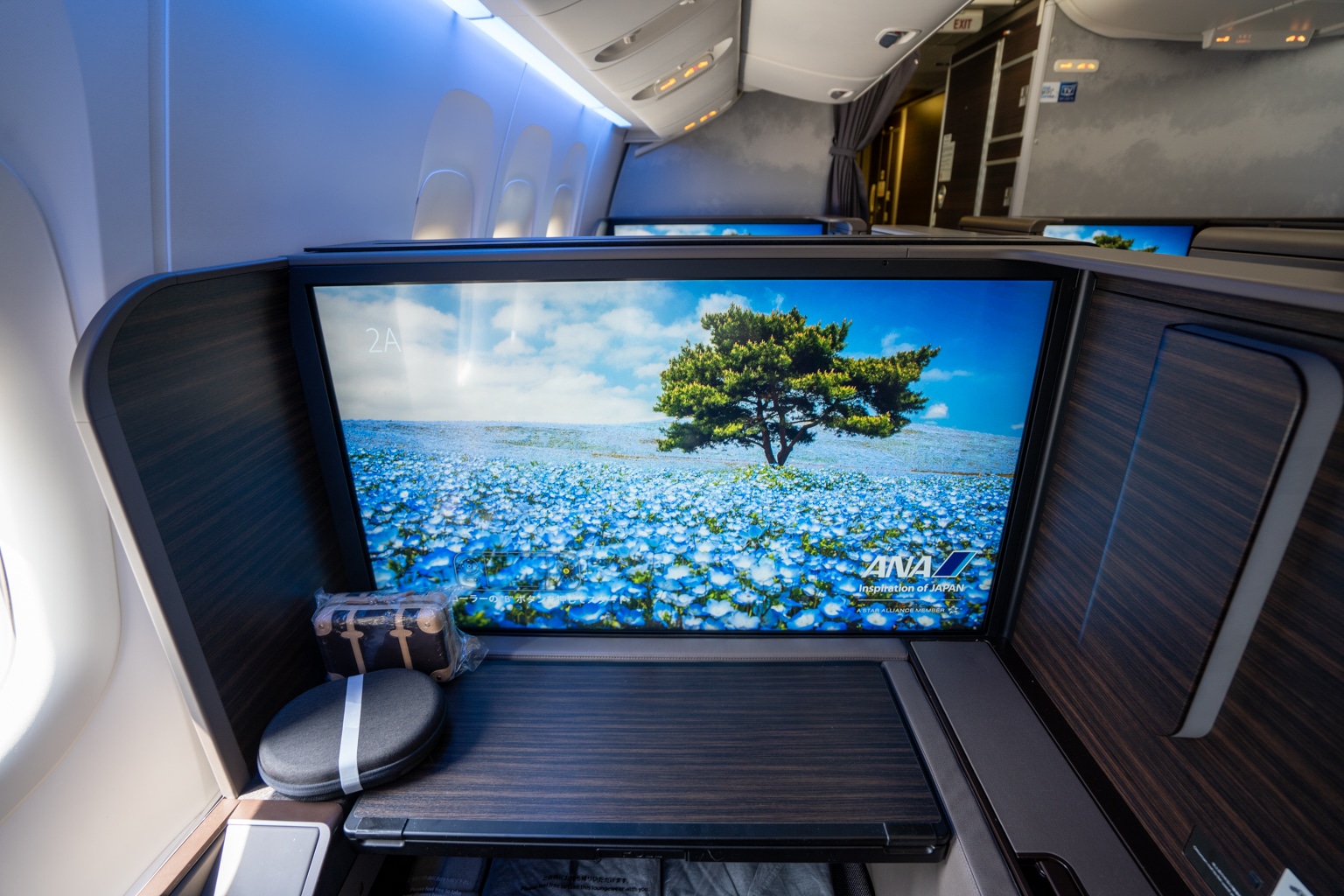
There is a remote which can be withdrawn from the console for handheld use. However, the entertainment screen is also highly responsive, and can be controlled via a touchscreen.
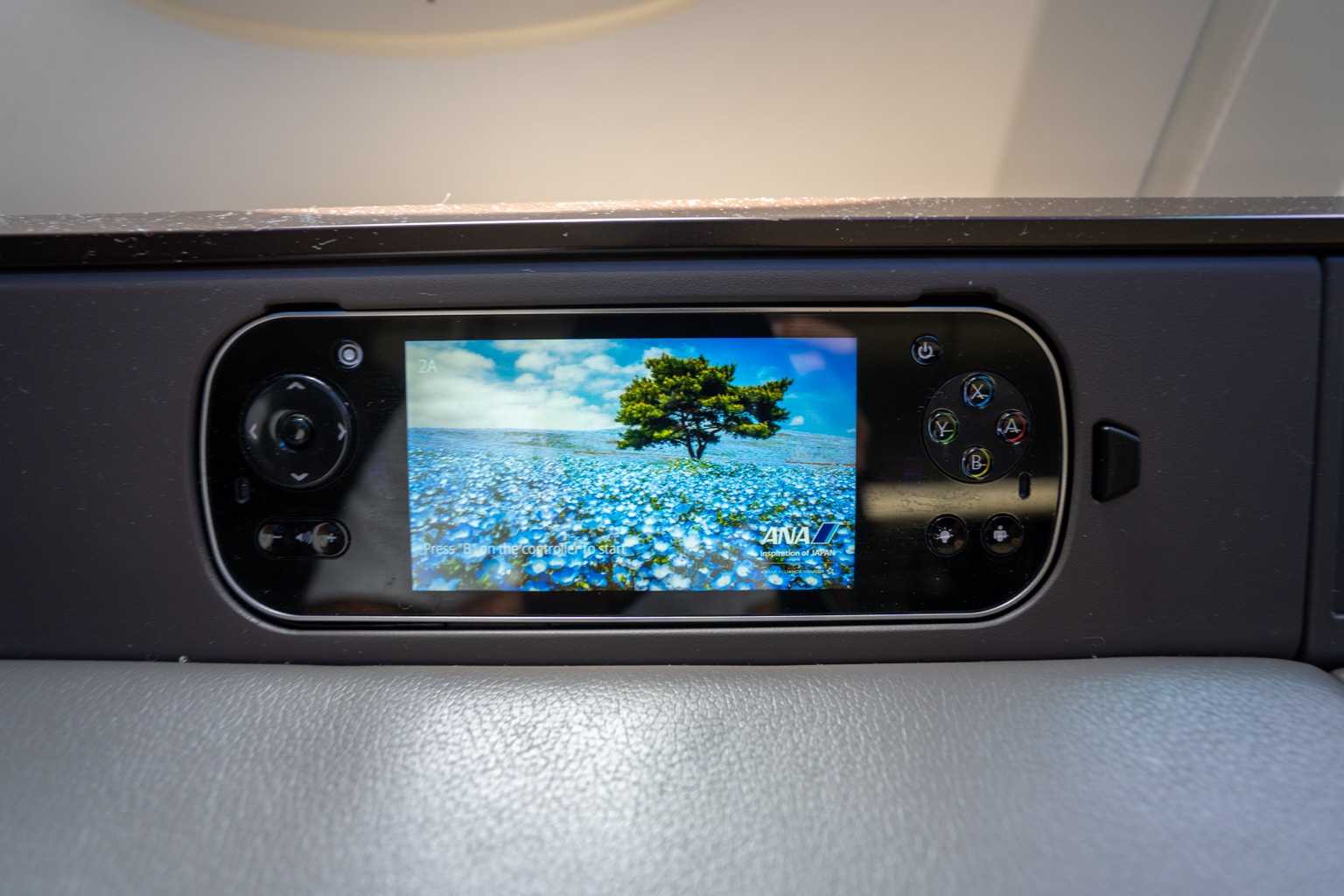
The 23-inch entertainment screen onboard JAL First Class indeed doesn’t even compare to the impressive 4K-resolution screen of ANA, which is nearly double the size.
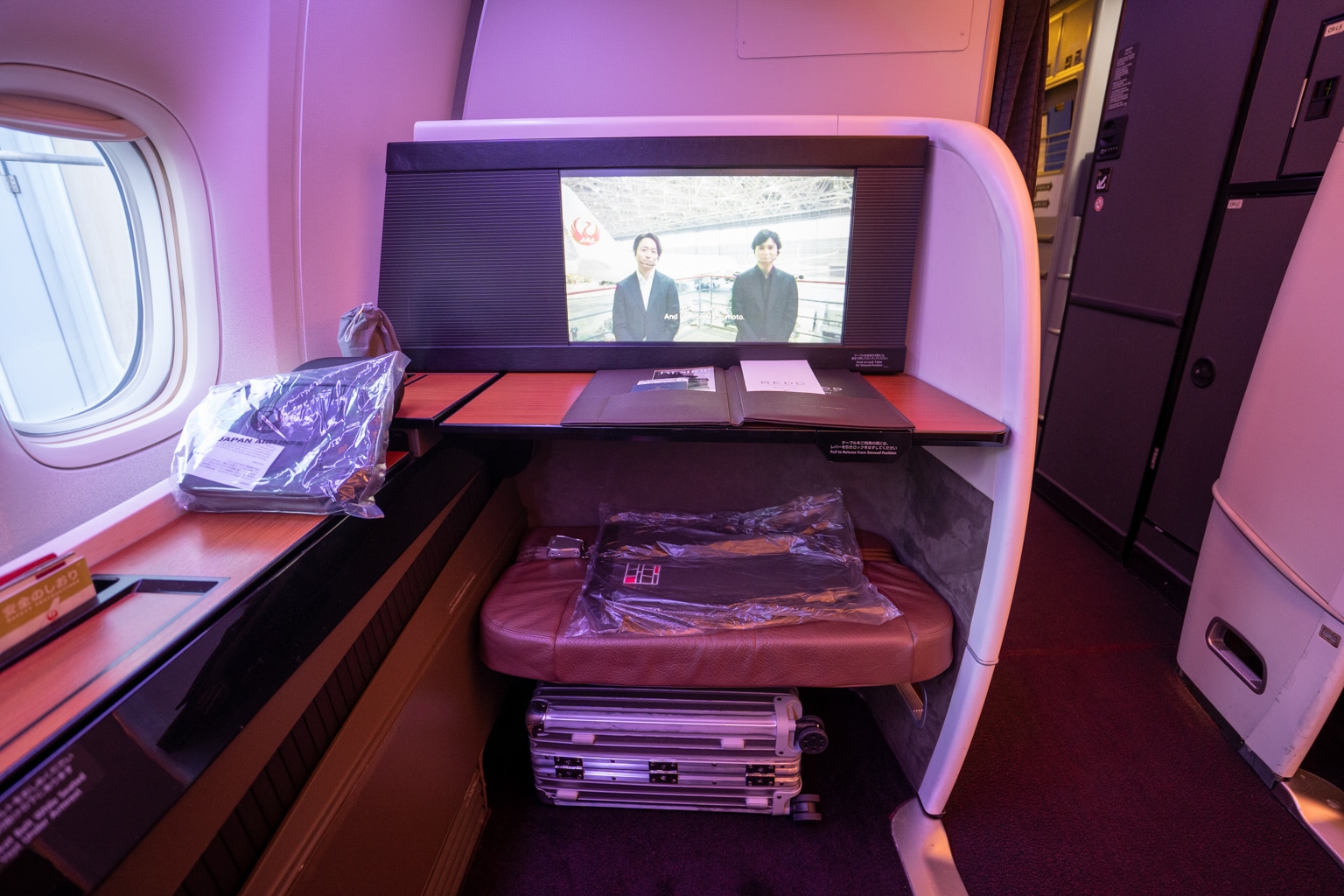
What’s more, the entertainment screen isn’t touch responsive, nor does the selection display on the screen while browsing. Instead, program choices are made directly on the handheld remote, and then appear on the screen once chosen.
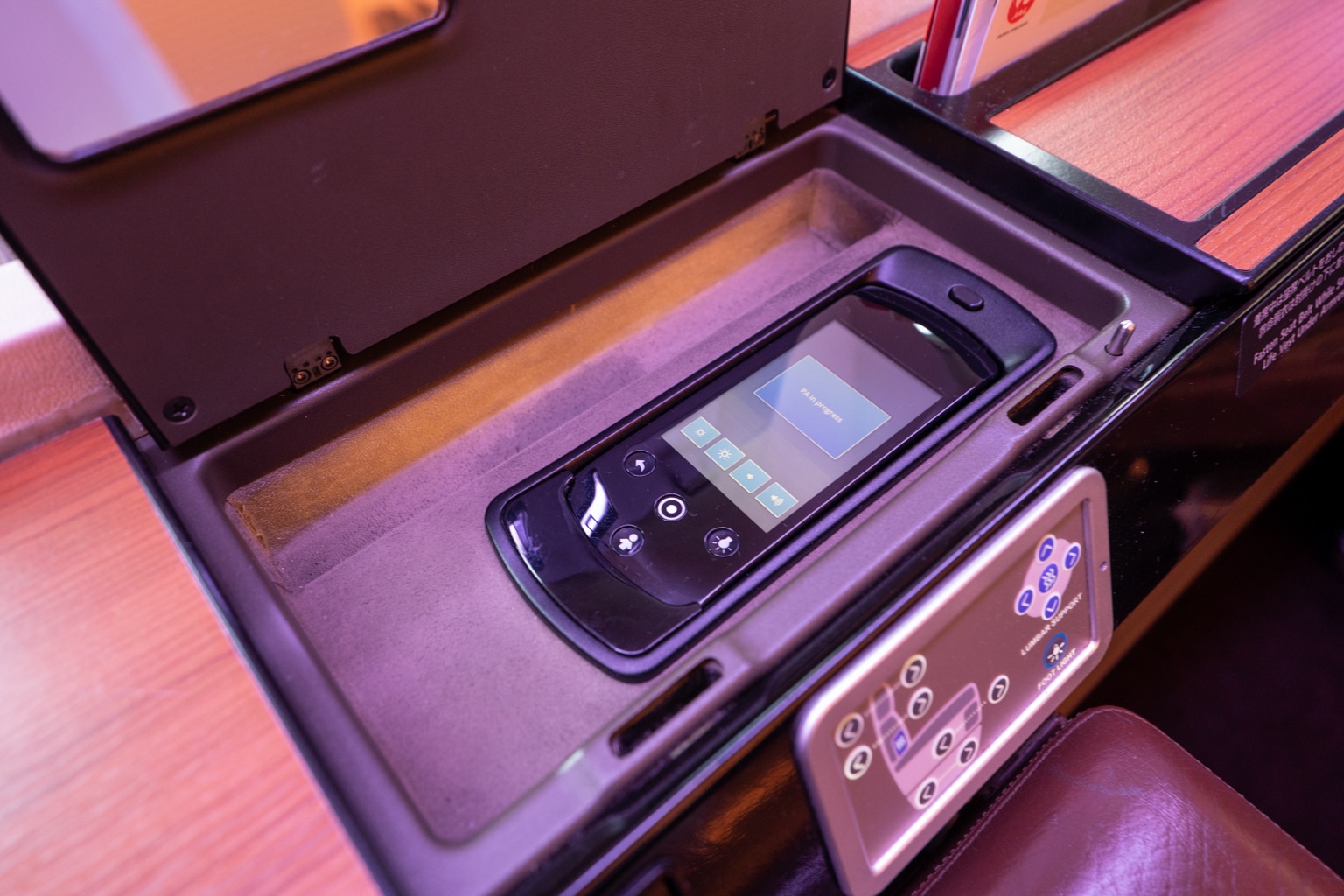
When it comes to entertainment selection, ANA doesn’t offer the most extensive entertainment selection, with around 50 titles, including Hollywood blockbusters and the most current Japanese releases. JAL First Class also has a modest selection, with a smattering of few new releases as well.
Finally, ANA also offers onboard cameras and live television. The onboard camera provides a forward and downward perspective, in addition to displaying the aircraft’s altitude and speed.
Both airlines offer complimentary Wi-Fi on their First Class flights, accessible via access codes provided to First Class passengers, with good connection speeds.
Verdict: ANA is the clear winner in this round, with its 4K entertainment screen and responsive screens blowing away JAL’s older, limited system, where you have to navigate from a small controller screen.
Snack Service
If you’ve managed to spare some room after the main meal service, both ANA and Japan Airlines offer a snack menu to First Class passengers. Luckily, both airlines have comprehensive offerings, with both western and Japanese dishes.
Udon and ramen noodles are the highlights of ANA’s First Class snack menu, while Japan Airlines features rice bowls and curry dishes. You’re sure to be delighted by any of the choices, and I’d rank them as equal, despite the differences.
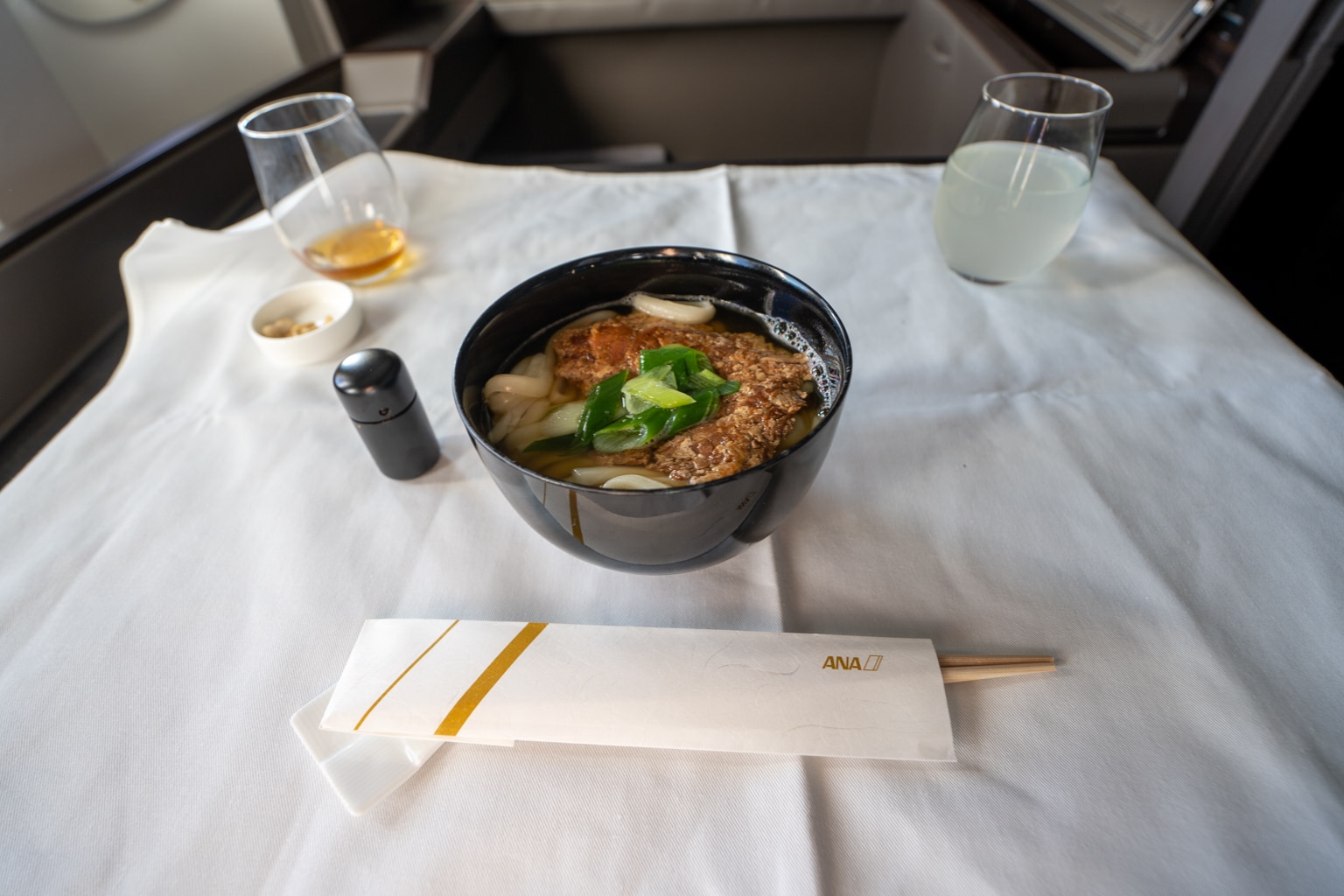
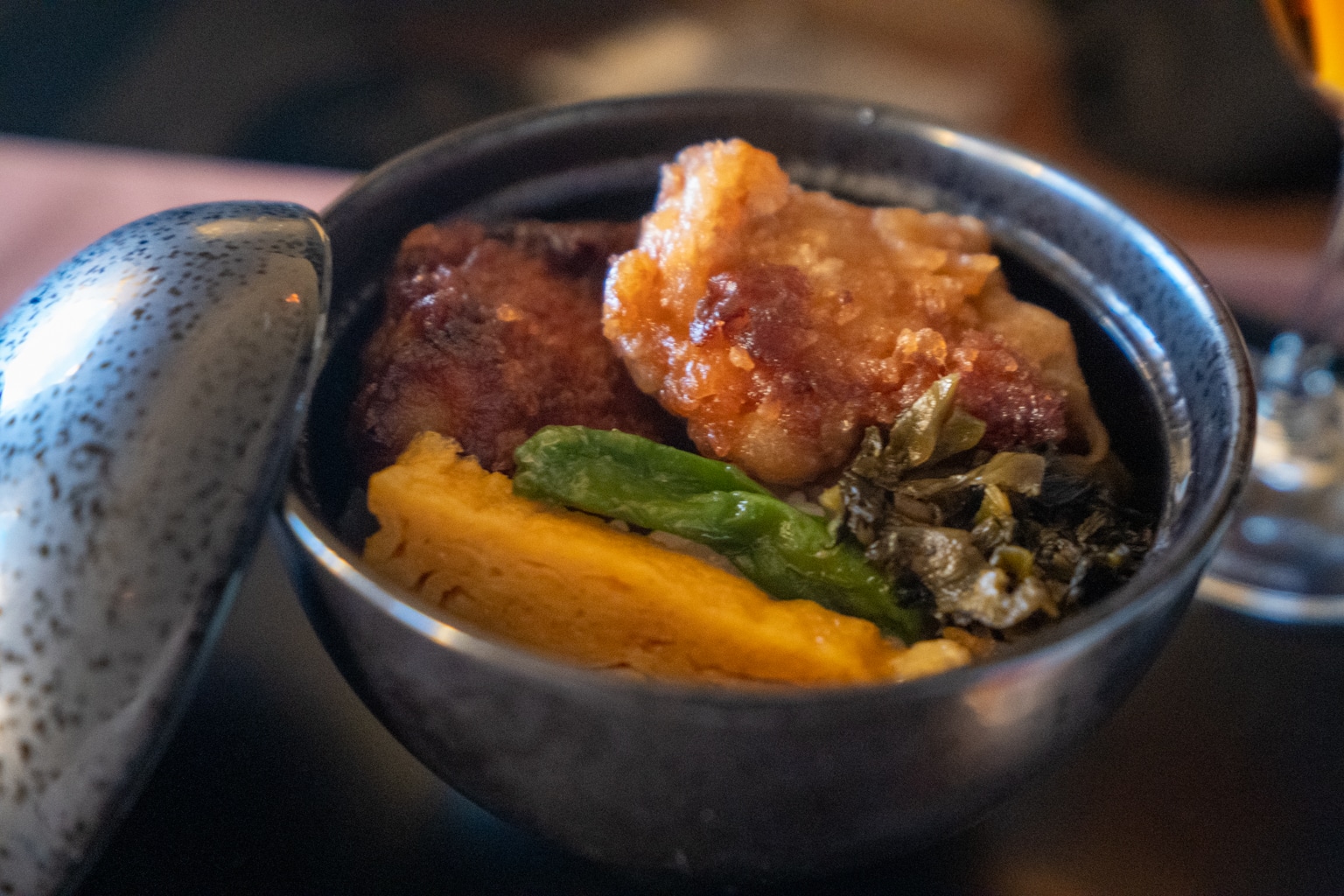
Similarly, ANA and Japan Airlines have a second washoku meal service prior to arrival. While not as elaborate as the main meal, you’ll still find a selection of delicious dishes that bring the in-flight service to a tasty conclusion.
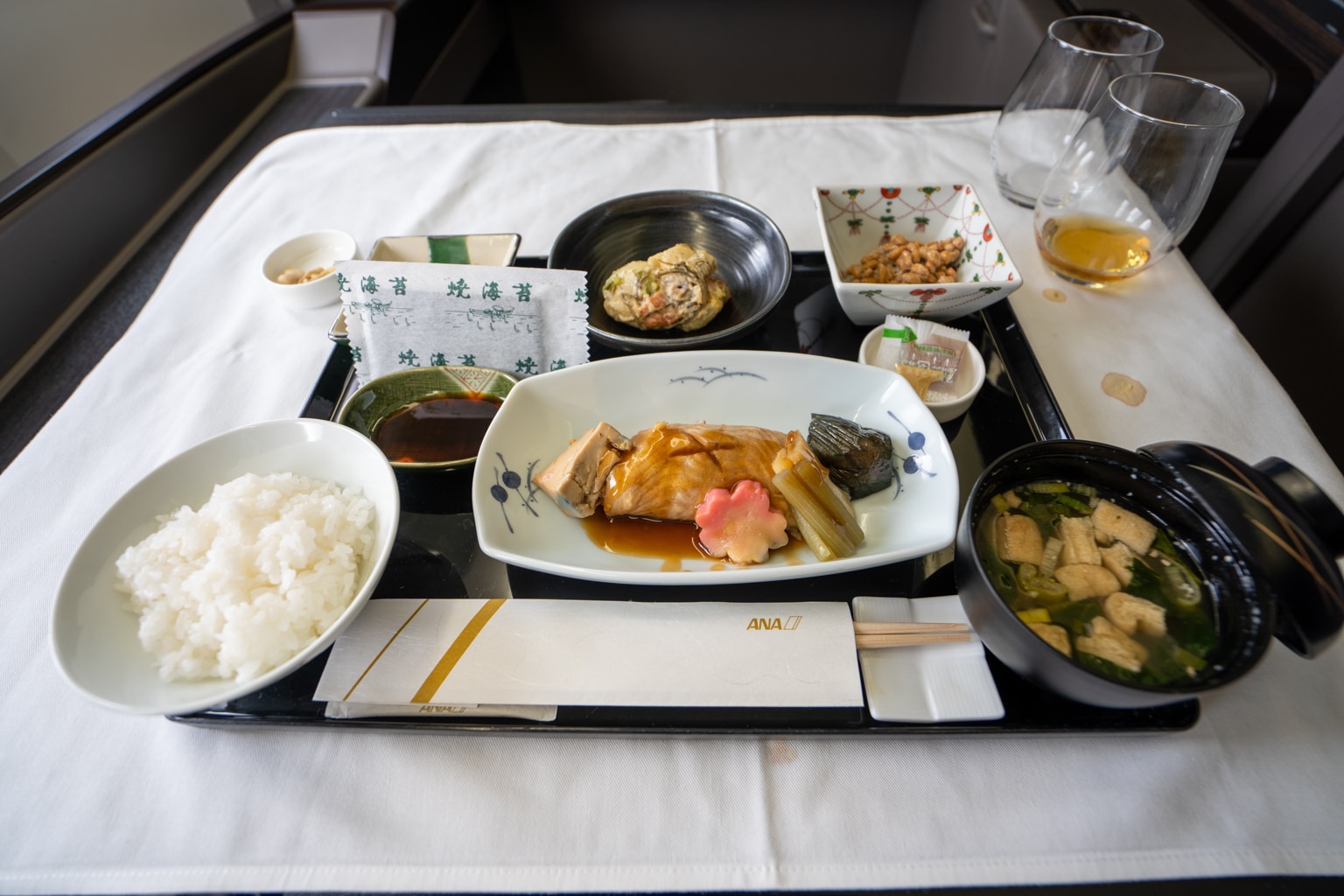

Verdict: ANA and Japan Airlines continue to offer some of the best food in the skies, and aside from the main course, both feature mouth-watering snack menus and delectable pre-arrival meals.
In this final round, we find ourselves with another draw, which is sure to benefit First Class passengers on either airline.
Conclusion
Despite the fact that both are world-class experiences with top-notch service, I’d give the edge to ANA First Class over Japan Airlines First Class because of the substantial differences in the hard product.
Onboard ANA, the new First Class offering is simply breathtaking. It’s opulent, equipped with the latest technology, and provides the utmost level of privacy.
Although JAL’s hard product is undeniably one of its weaknesses, I’d say the airline outperforms its rival when it comes to its soft products, as well as the relative ease of finding award availability.
Japan Airlines would certainly give ANA a run for their money if they were to update the First Class hard product in the future, and I would wholeheartedly love to see the airlines duke it out to become Japan’s best First Class airline if and when they do.






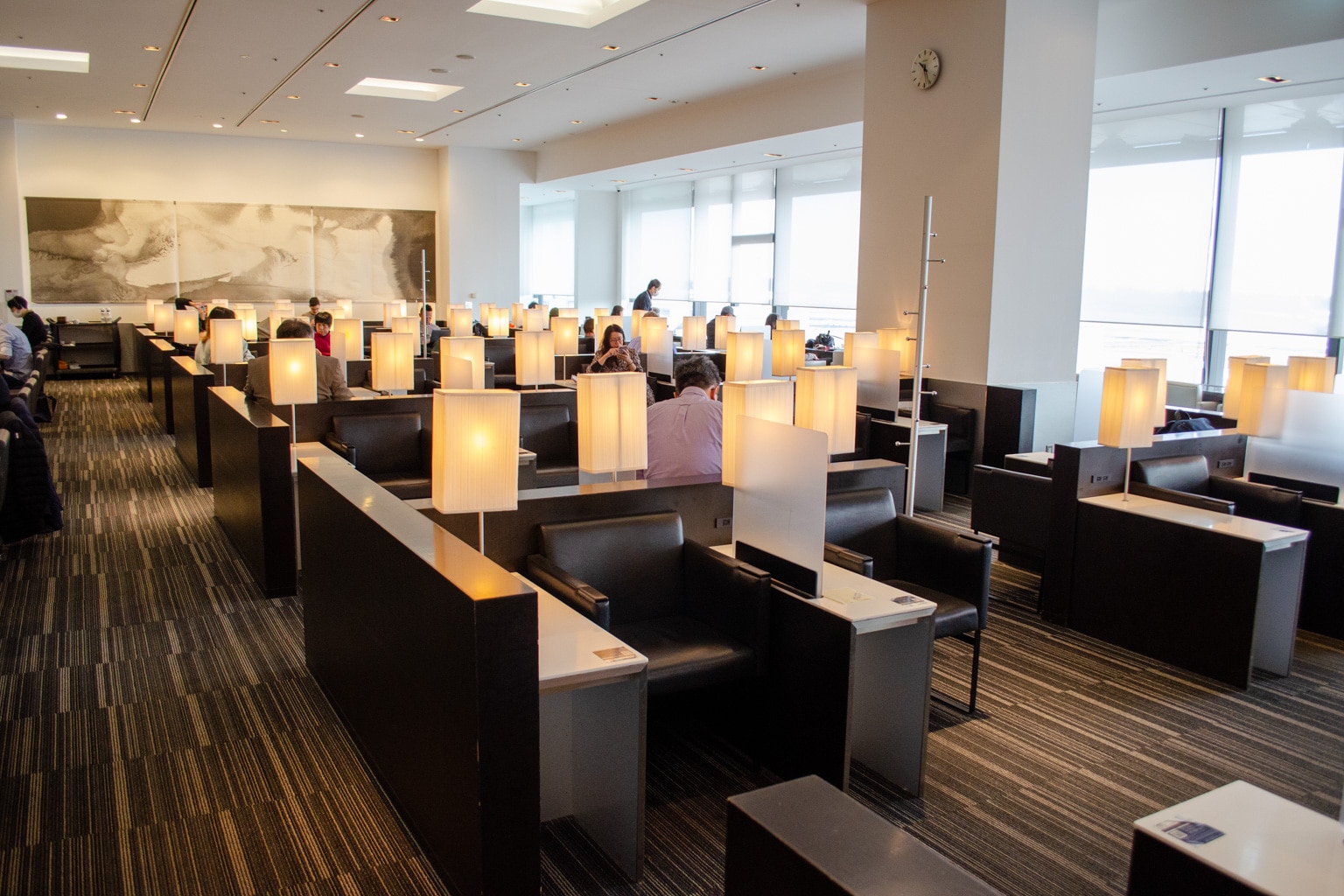
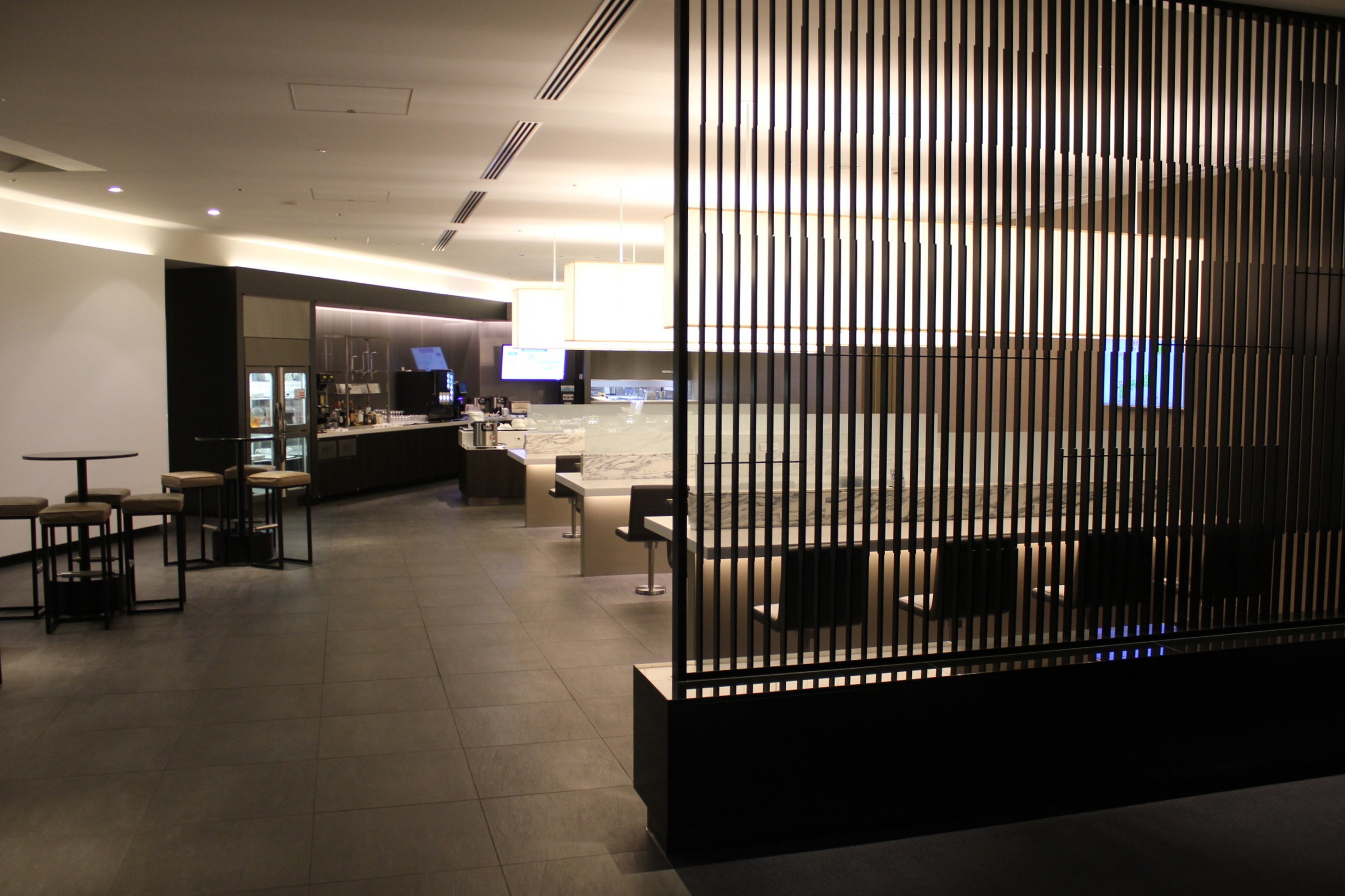

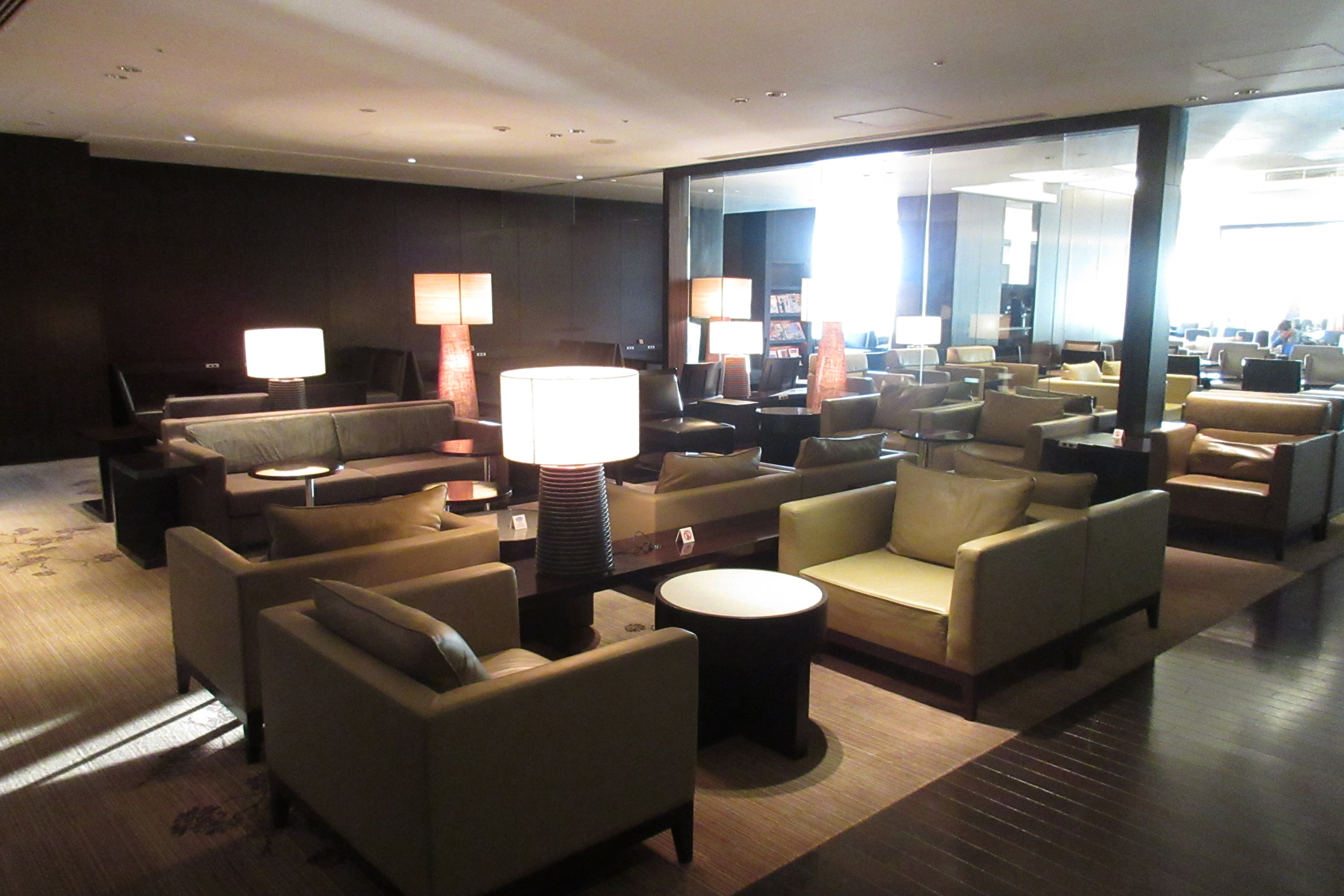

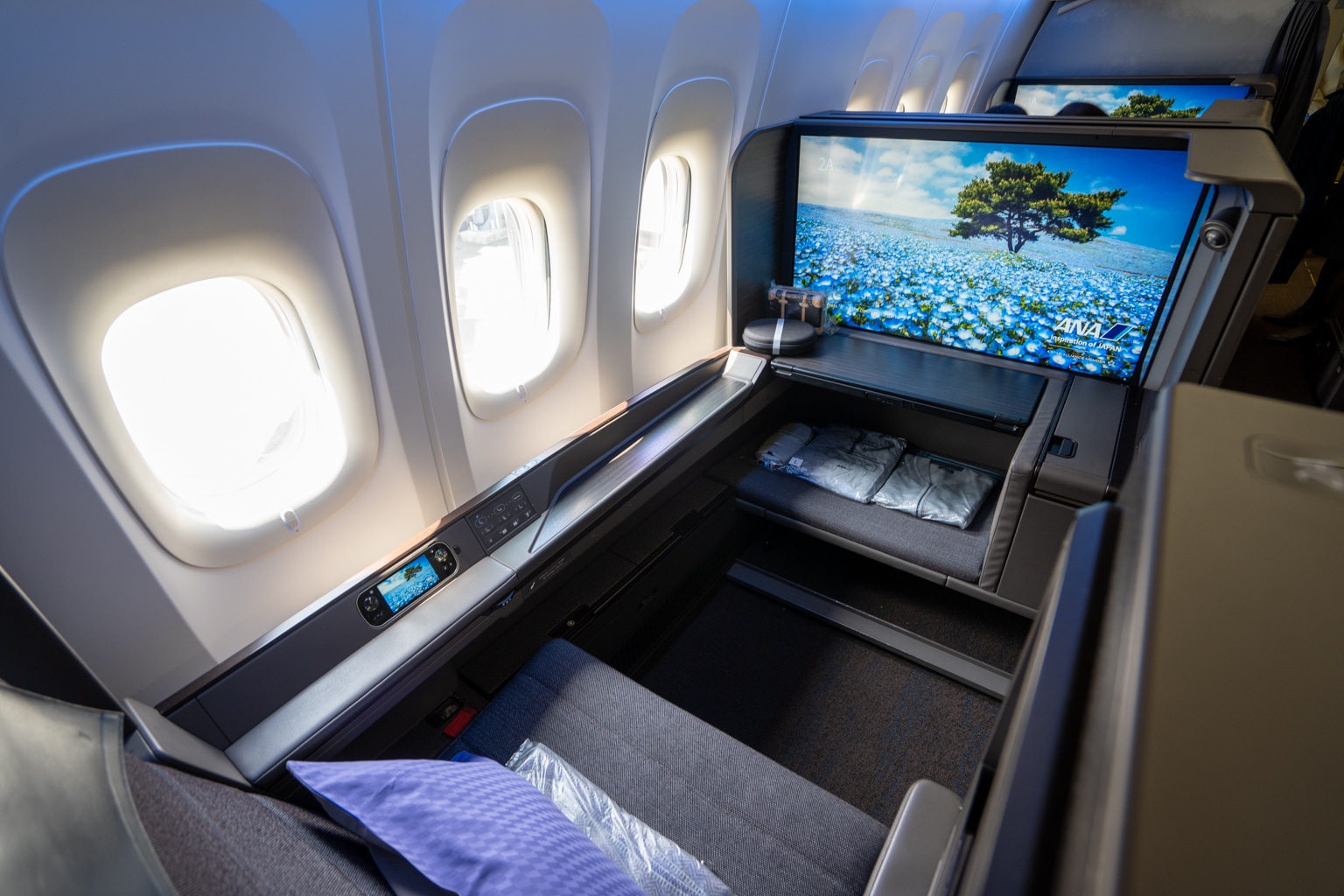
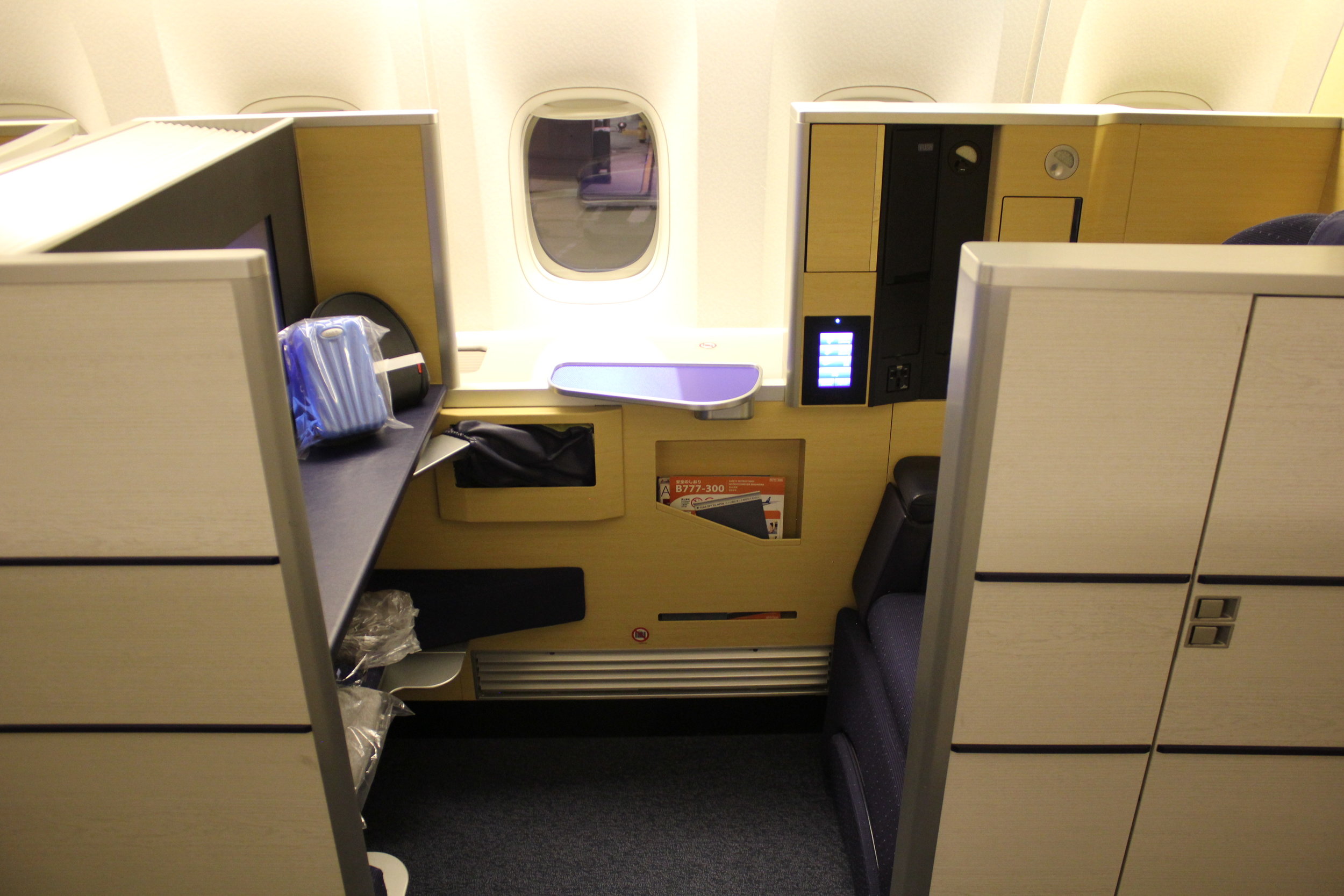











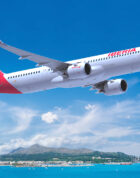

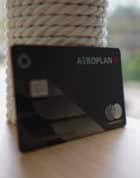

Very comprehensive. Including the bad with the good is appreciated. Do either have air nozzles?
Hi Ricky,
Have you ever tried the Western menu on ANA or JAL? If so, which one would be the winner?
I tried the Western menu on JAL recently, which was a pretty amazing meal but still slightly outperformed by the Japanese menu in my opinion (though the Western desserts were superior to the Japanese ones).
Haven’t tried ANA yet – I’ll probably give it a go next time and then will be able to add to this Head-to-Head review.